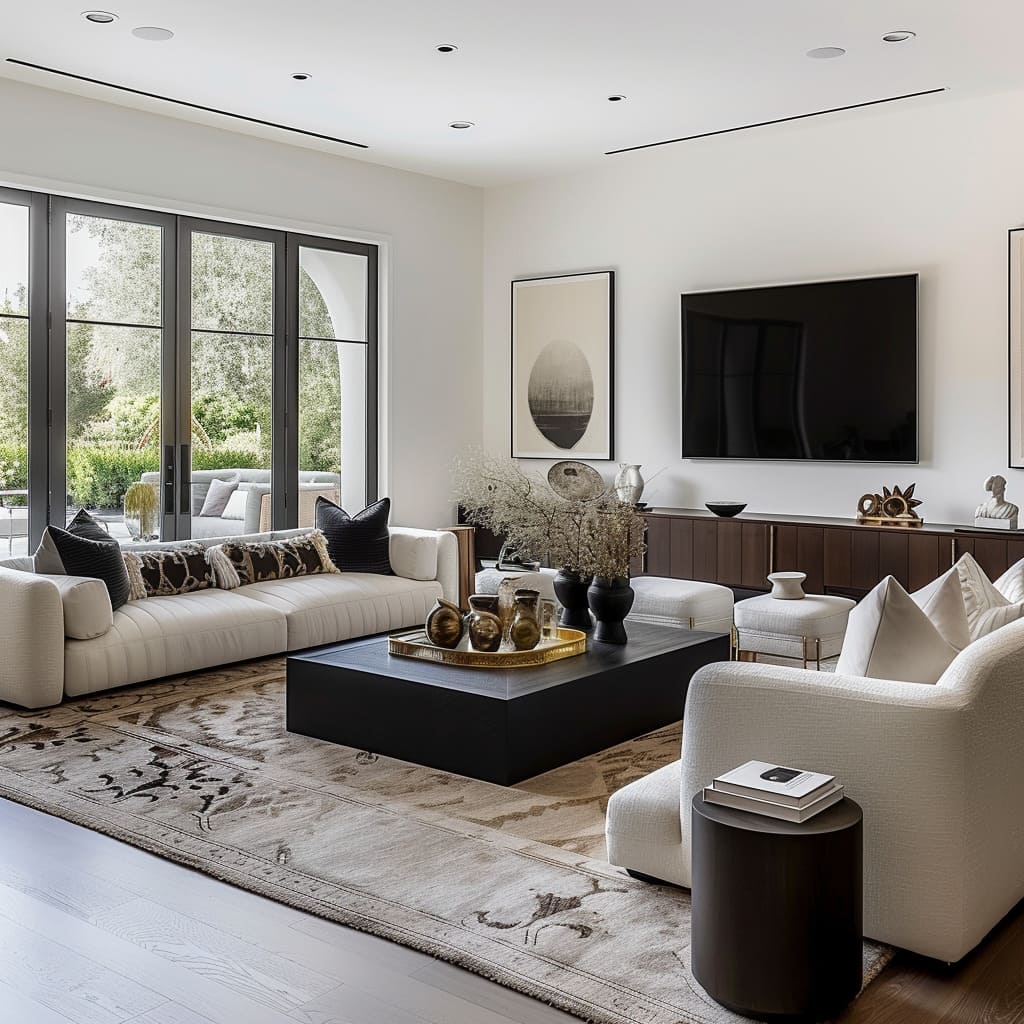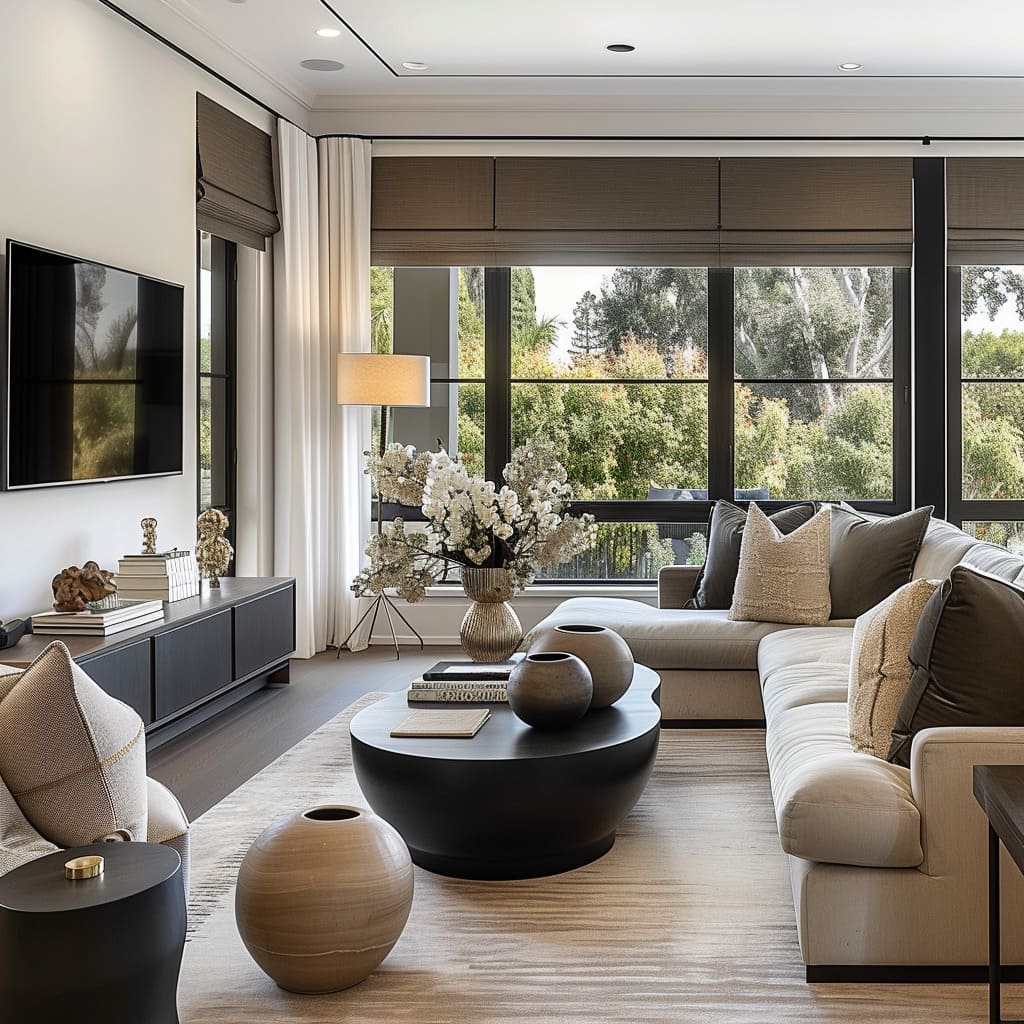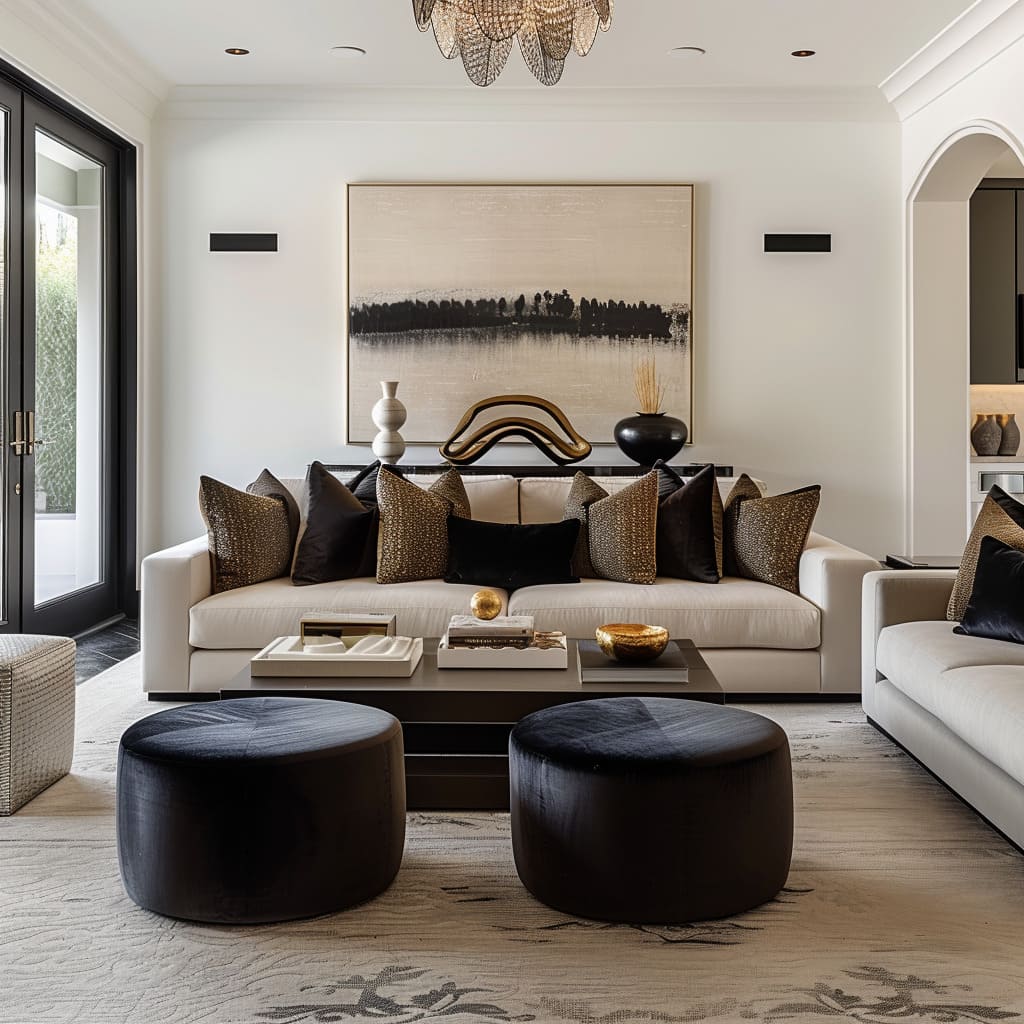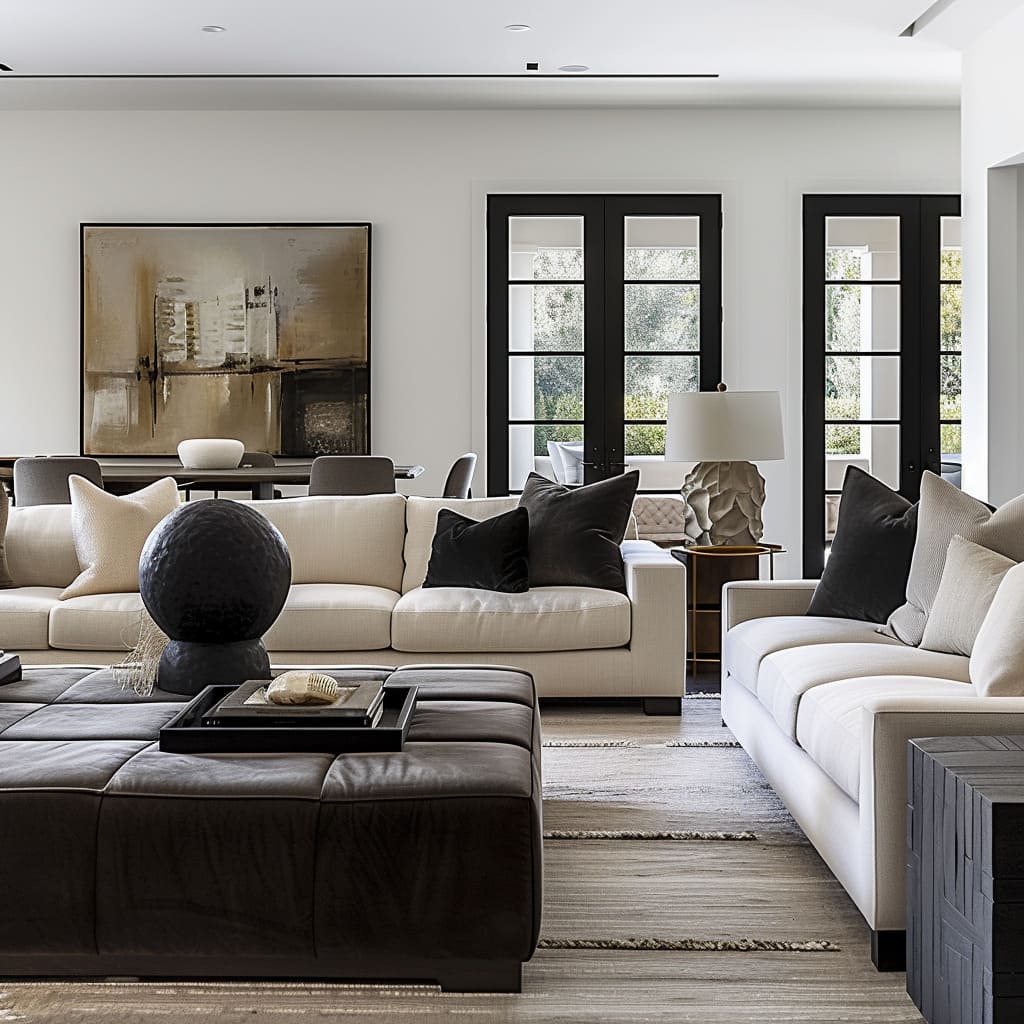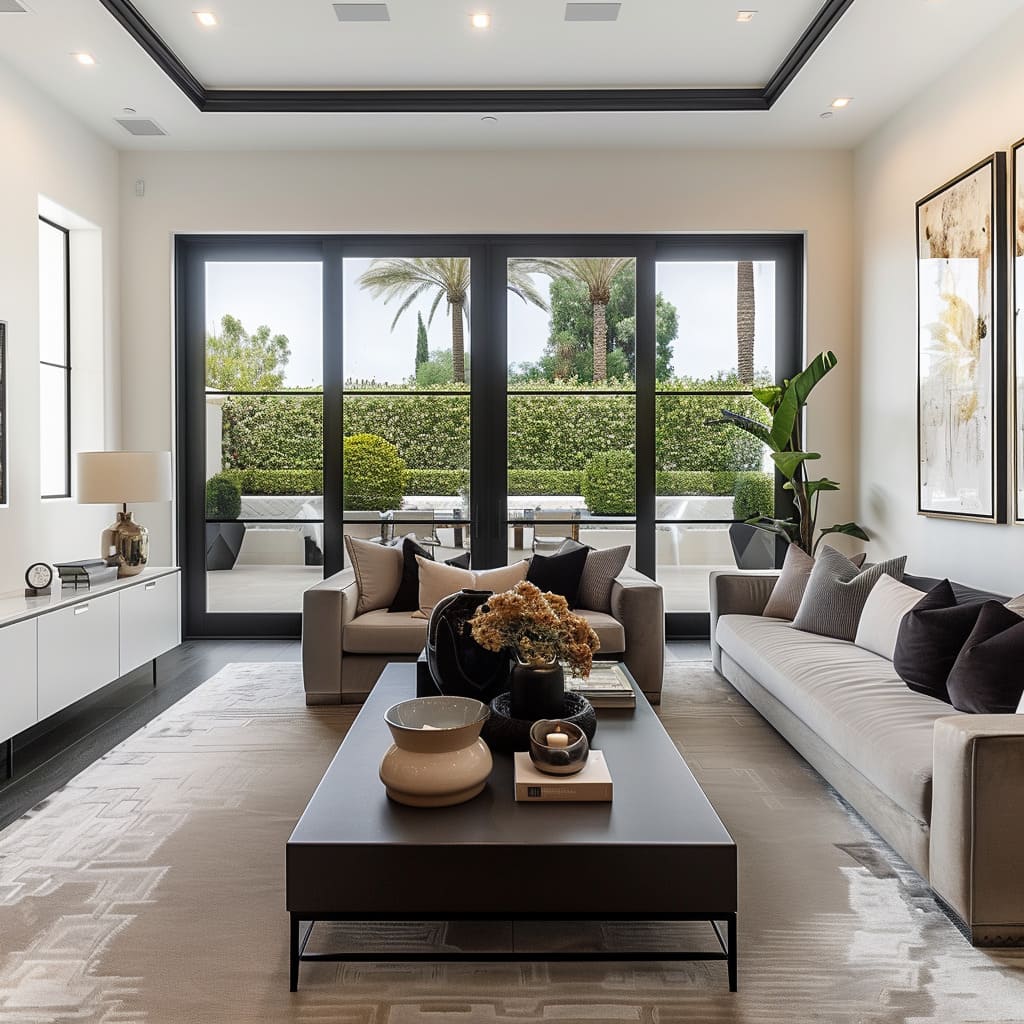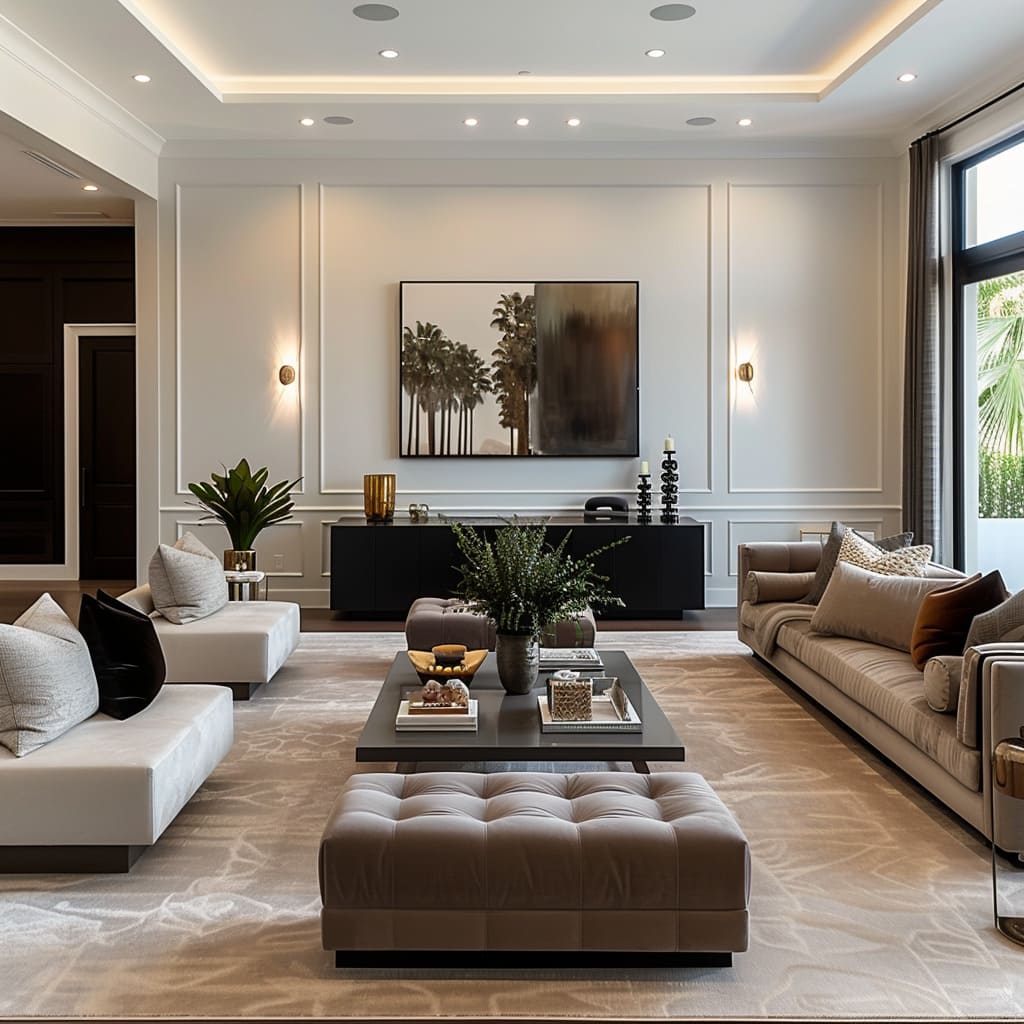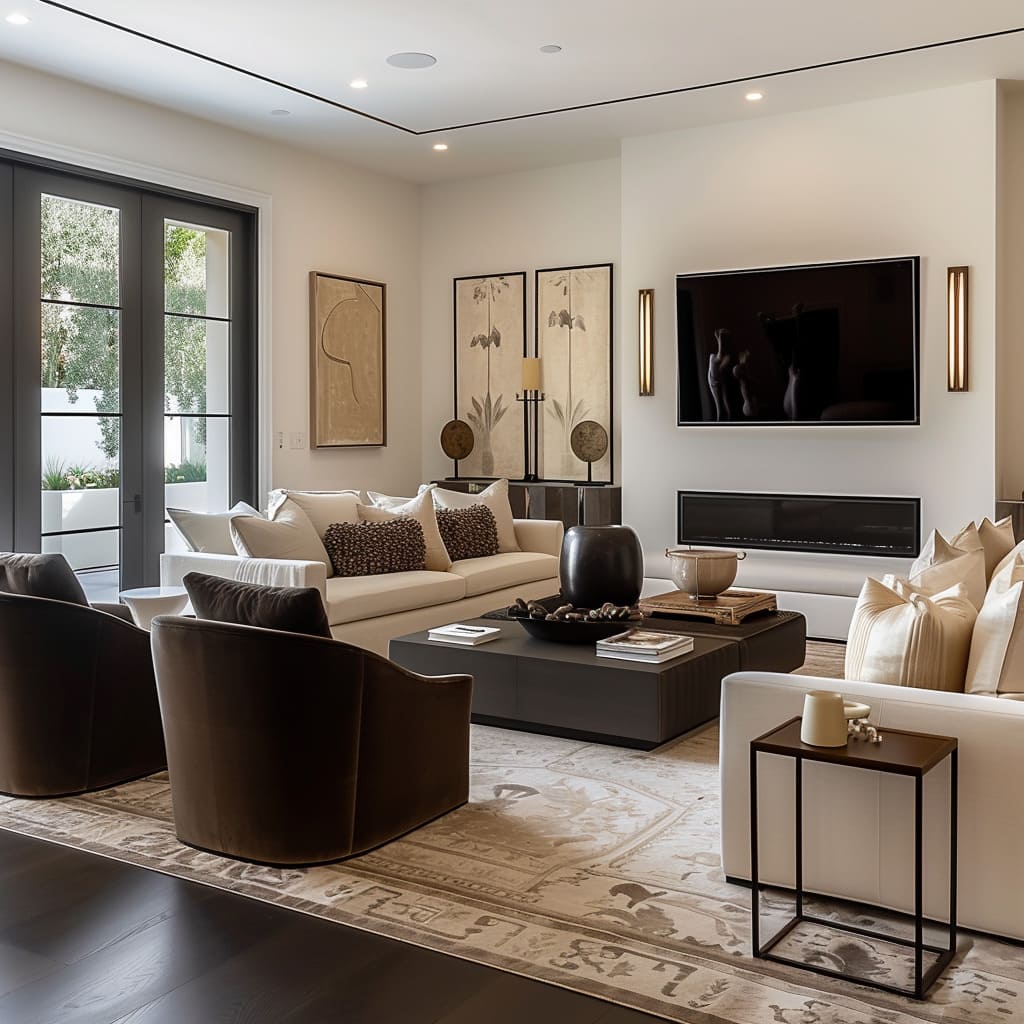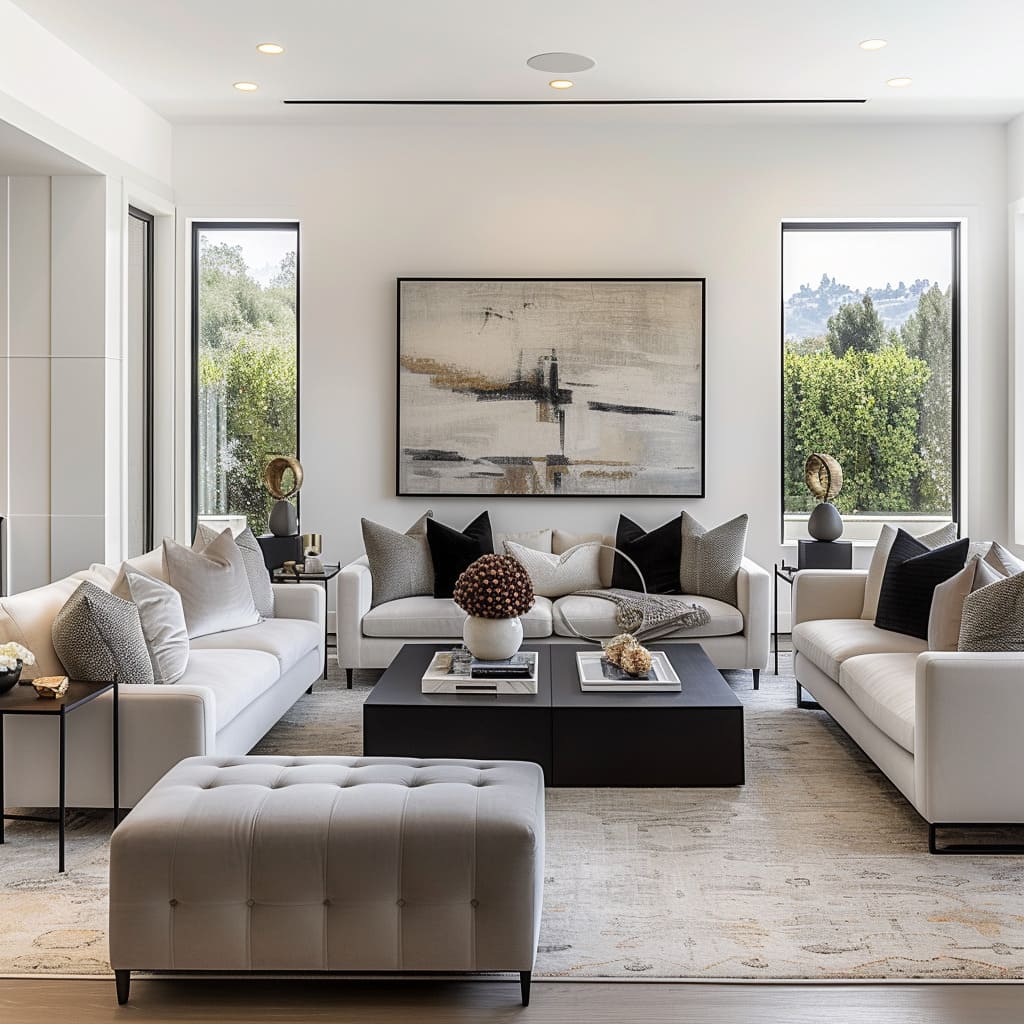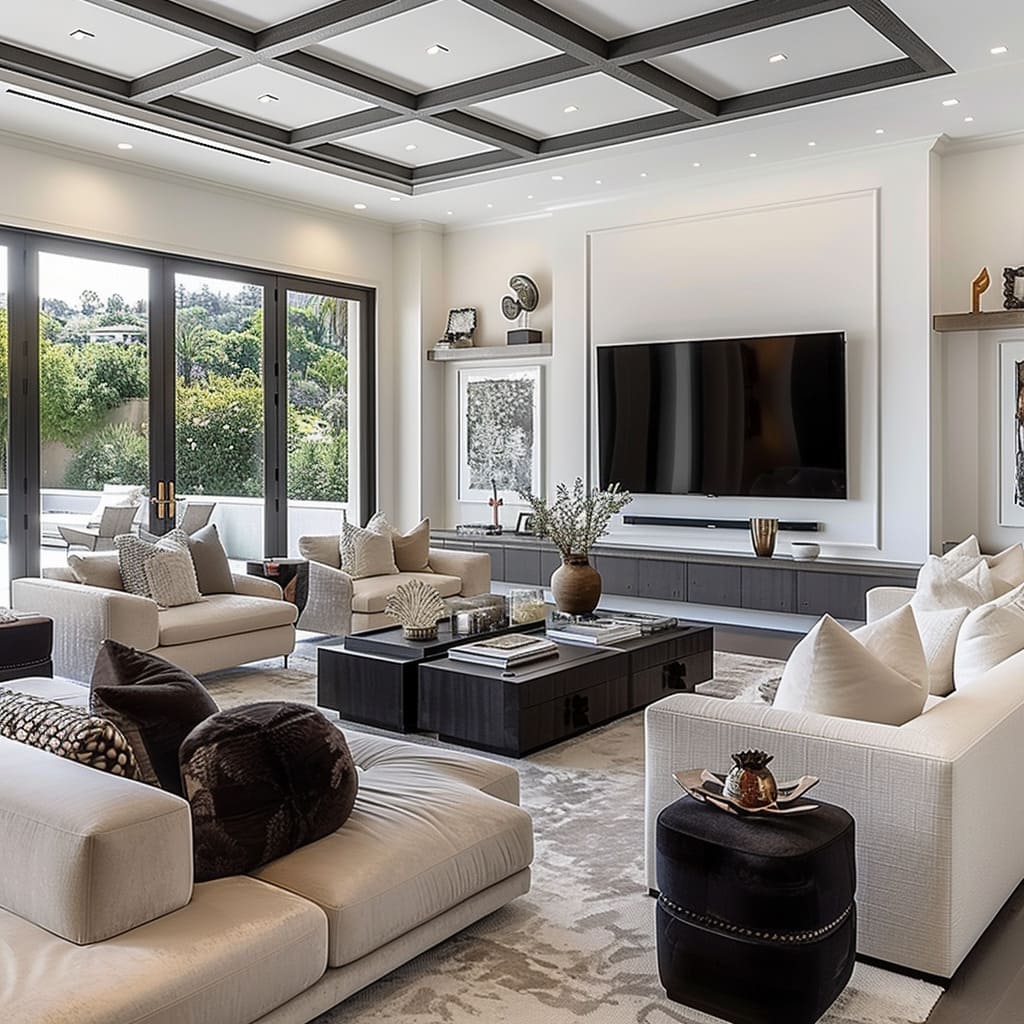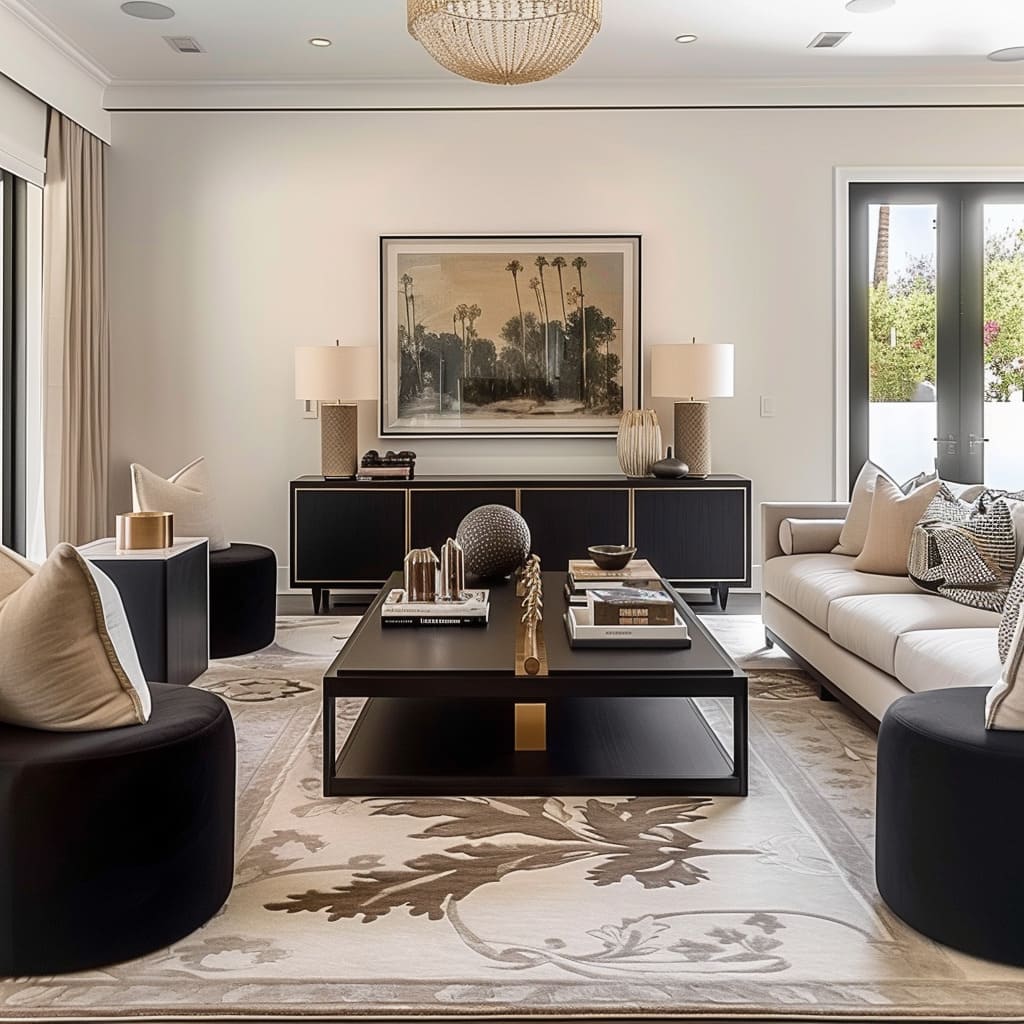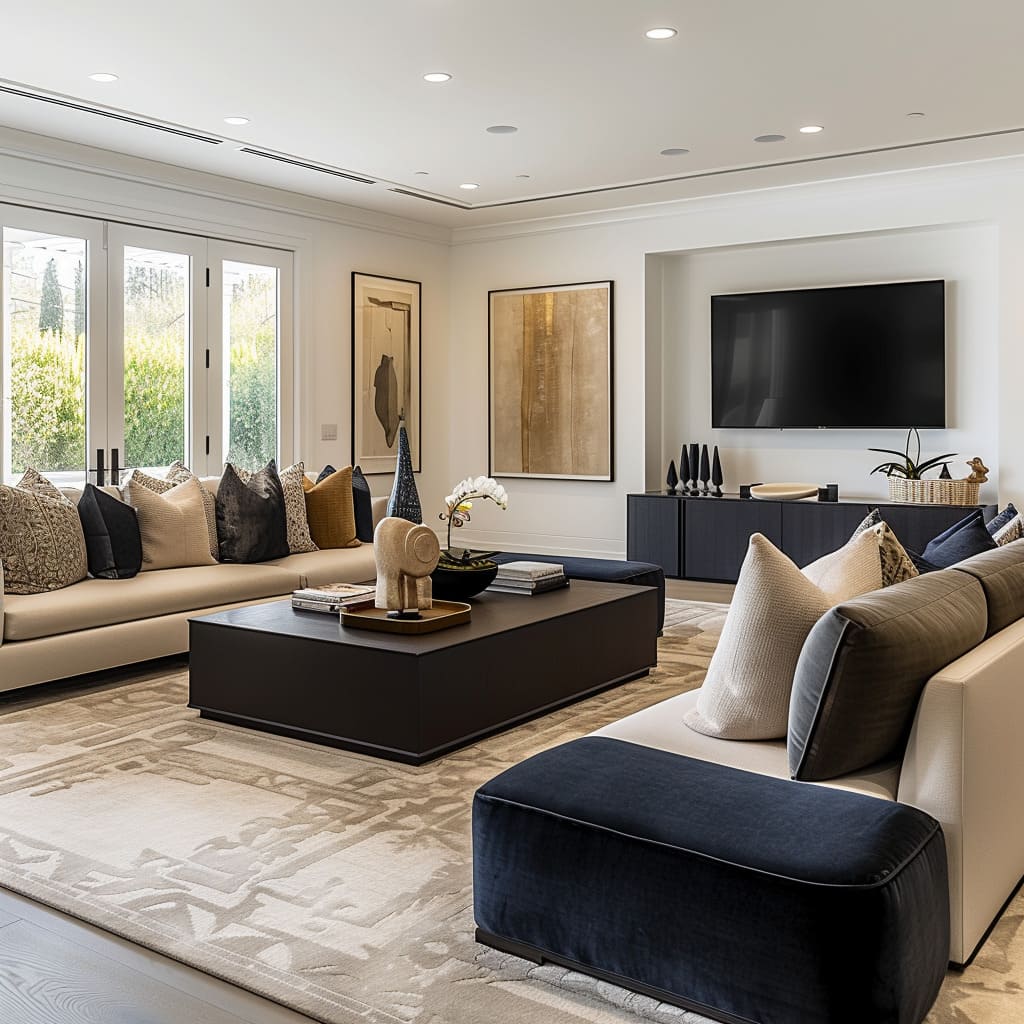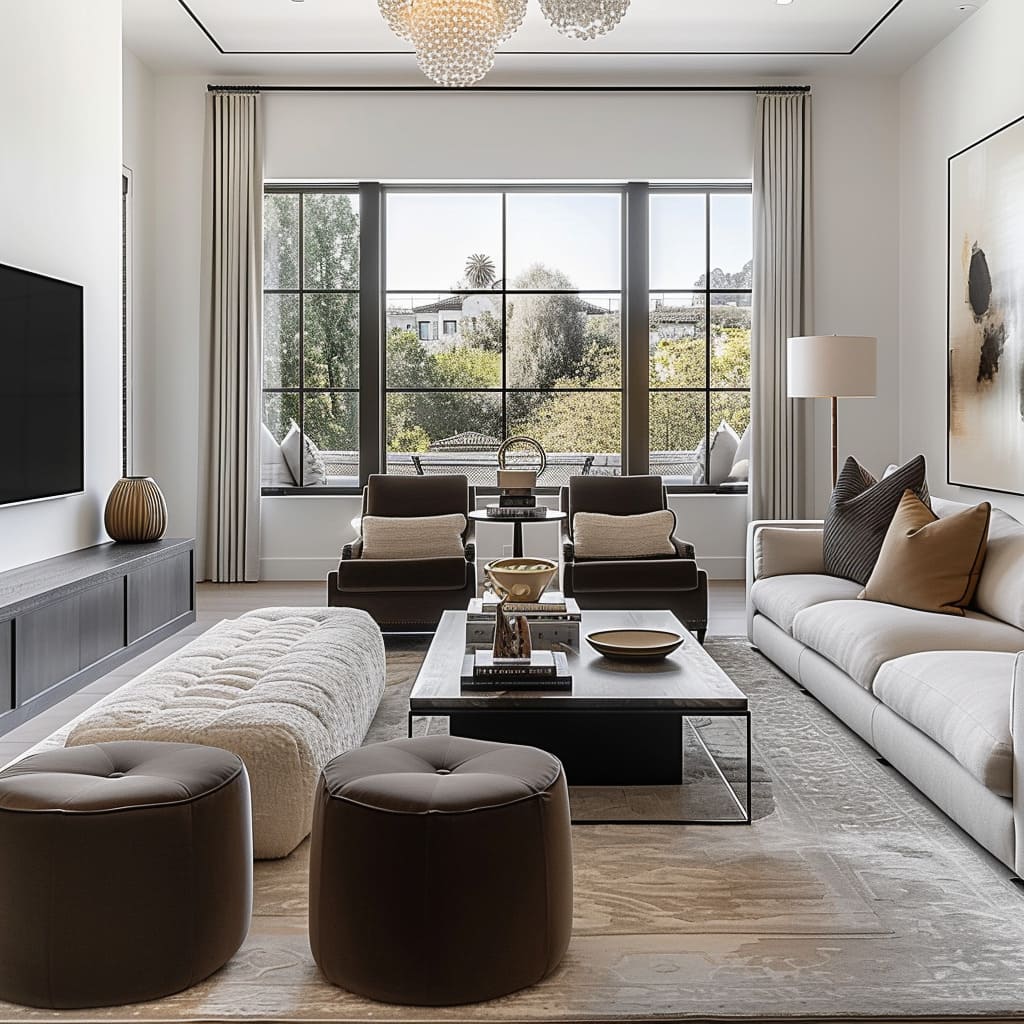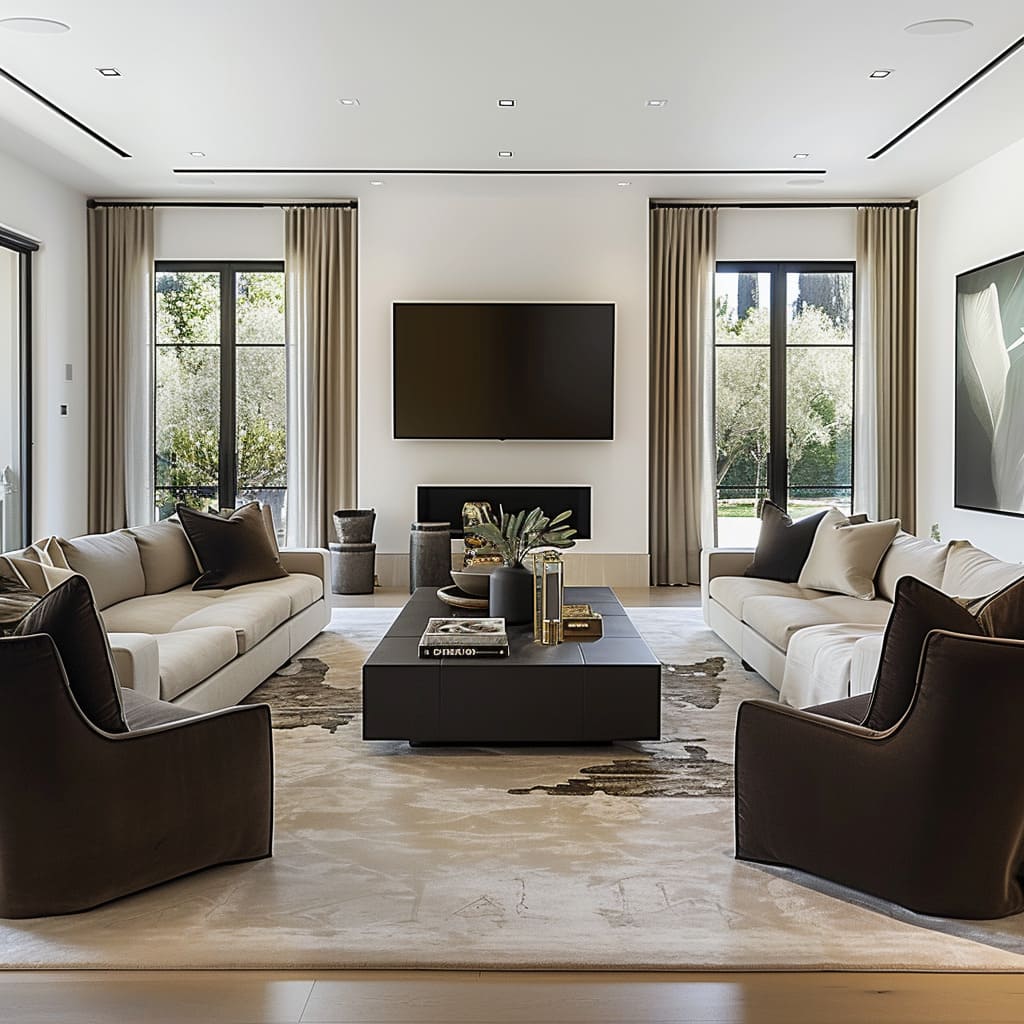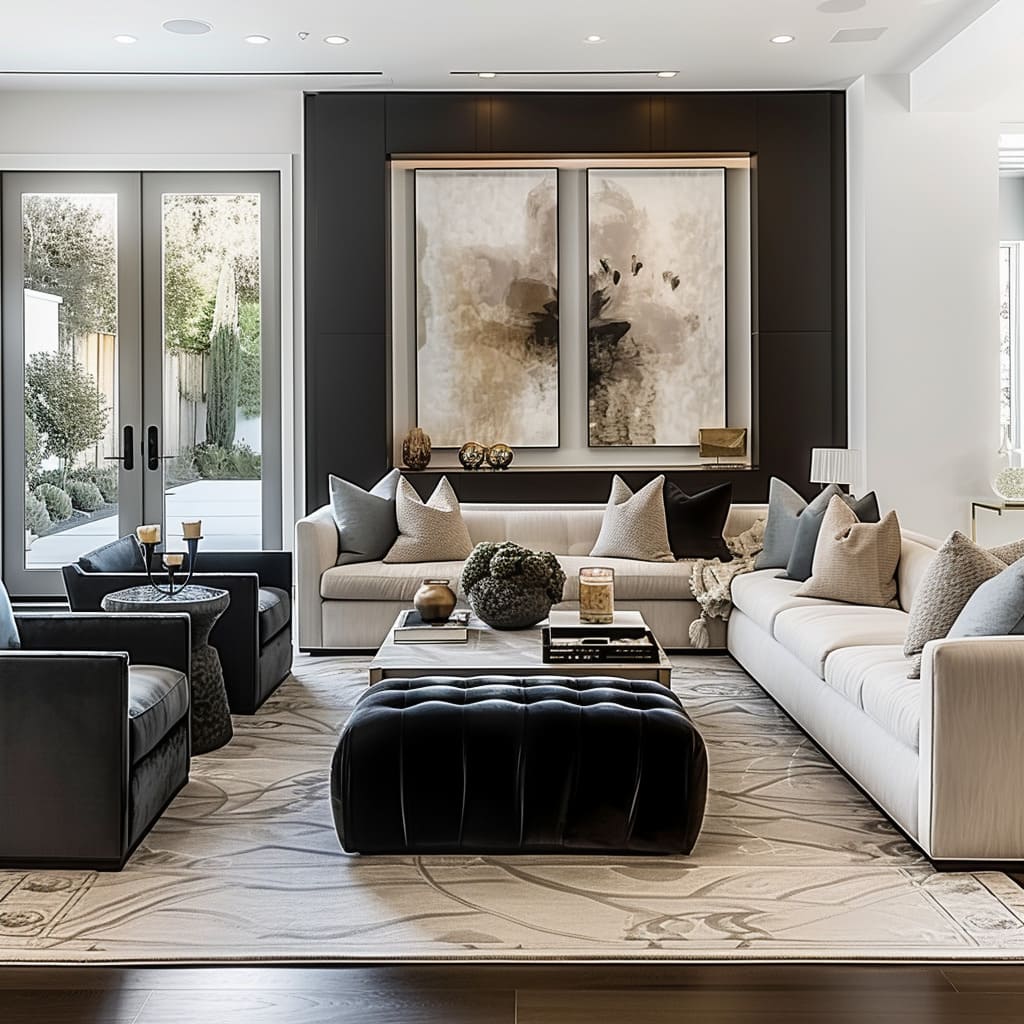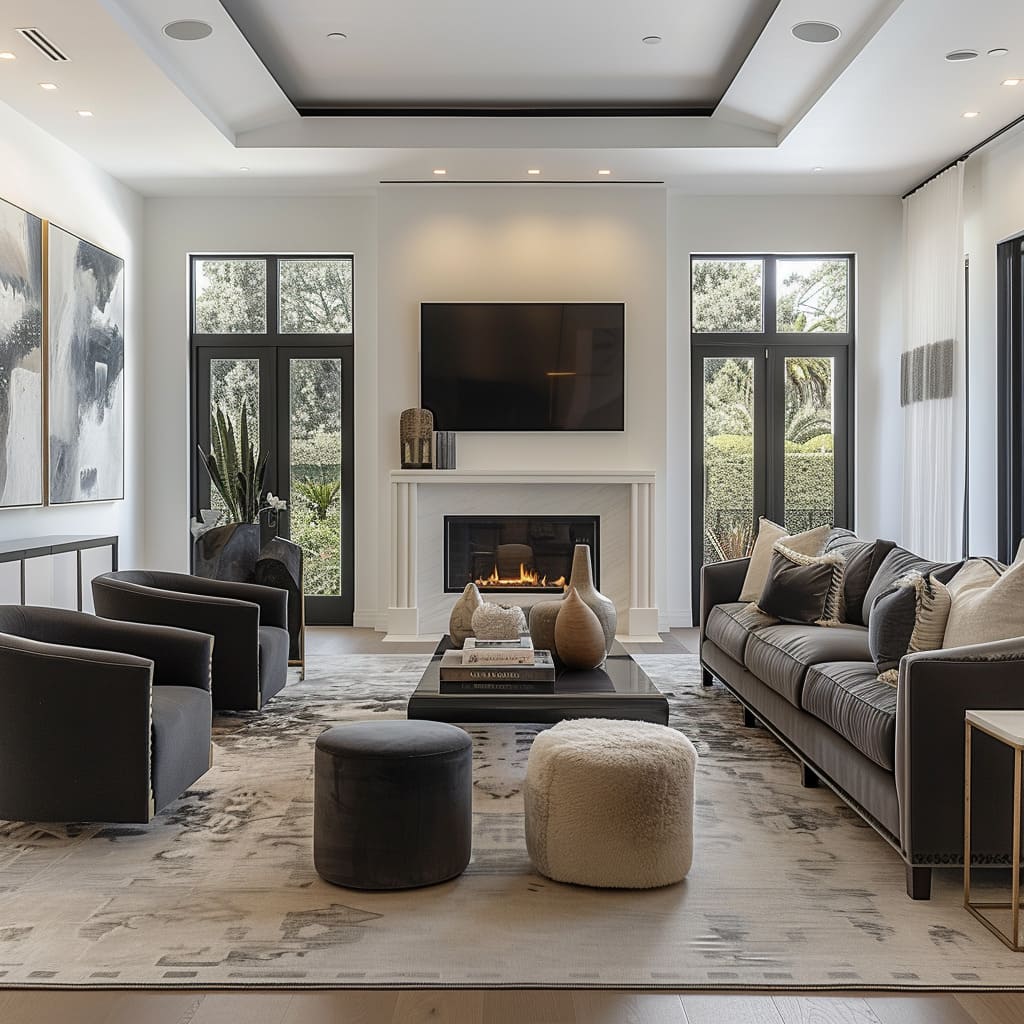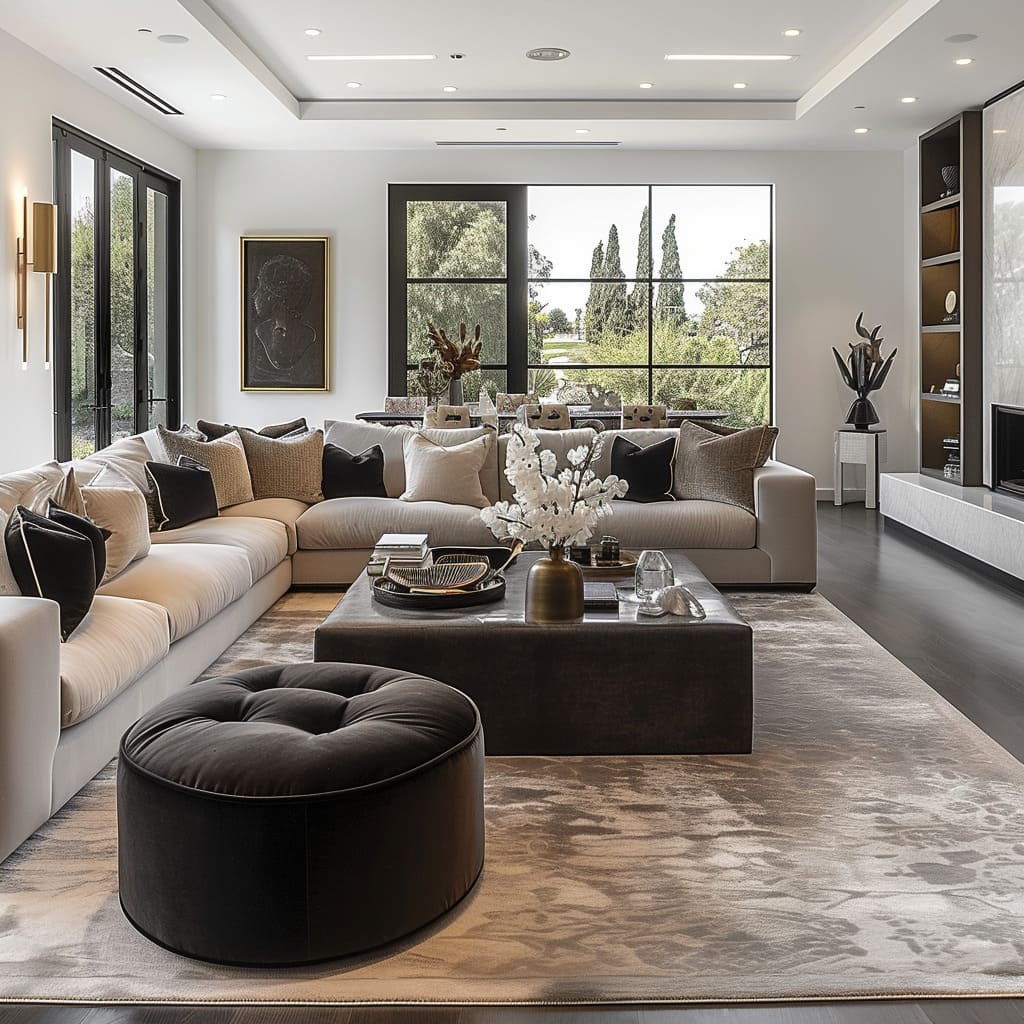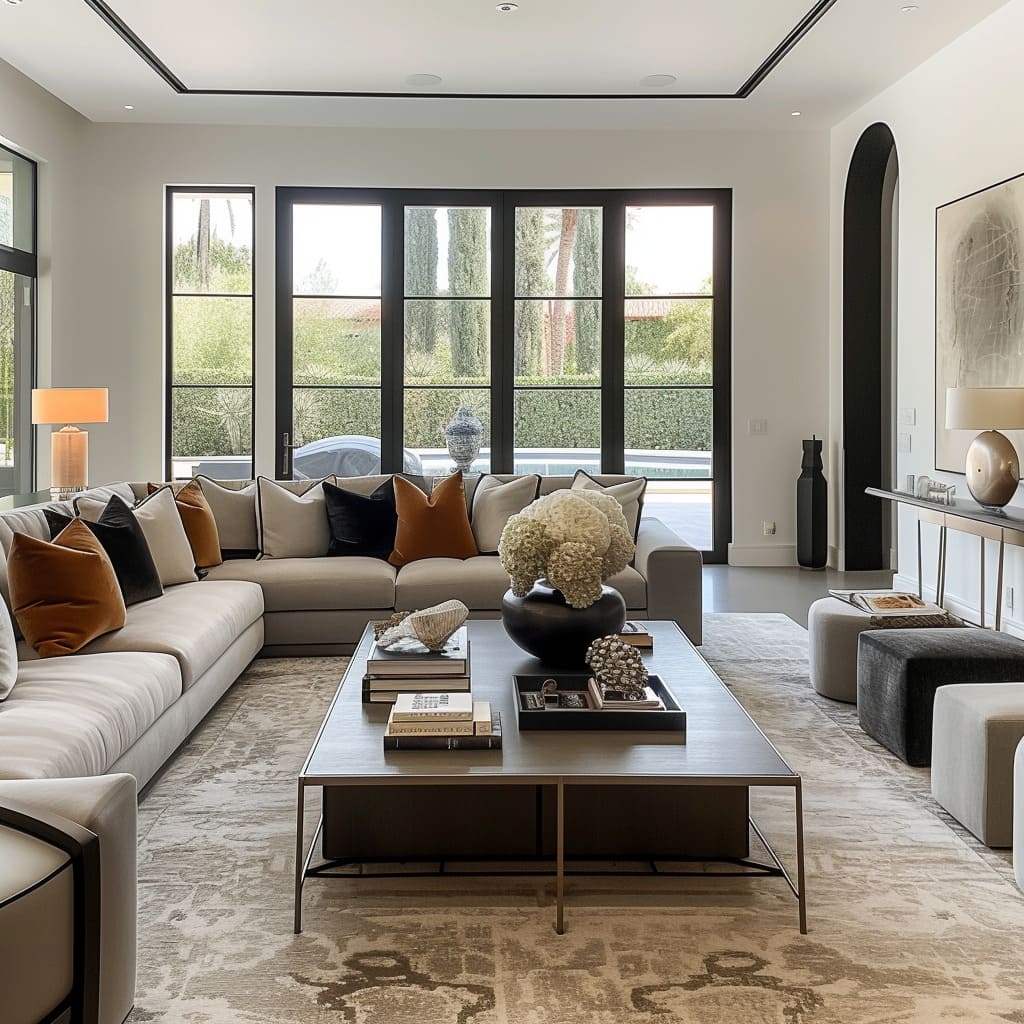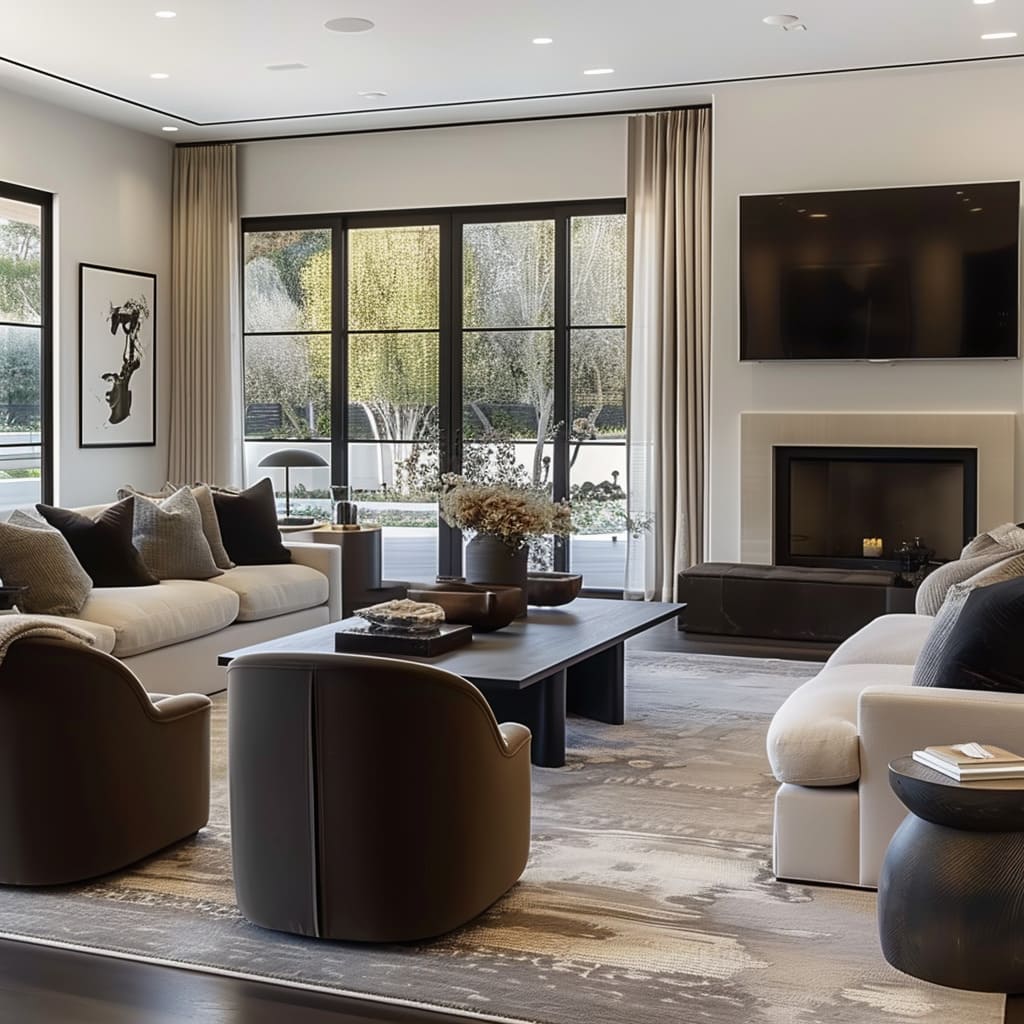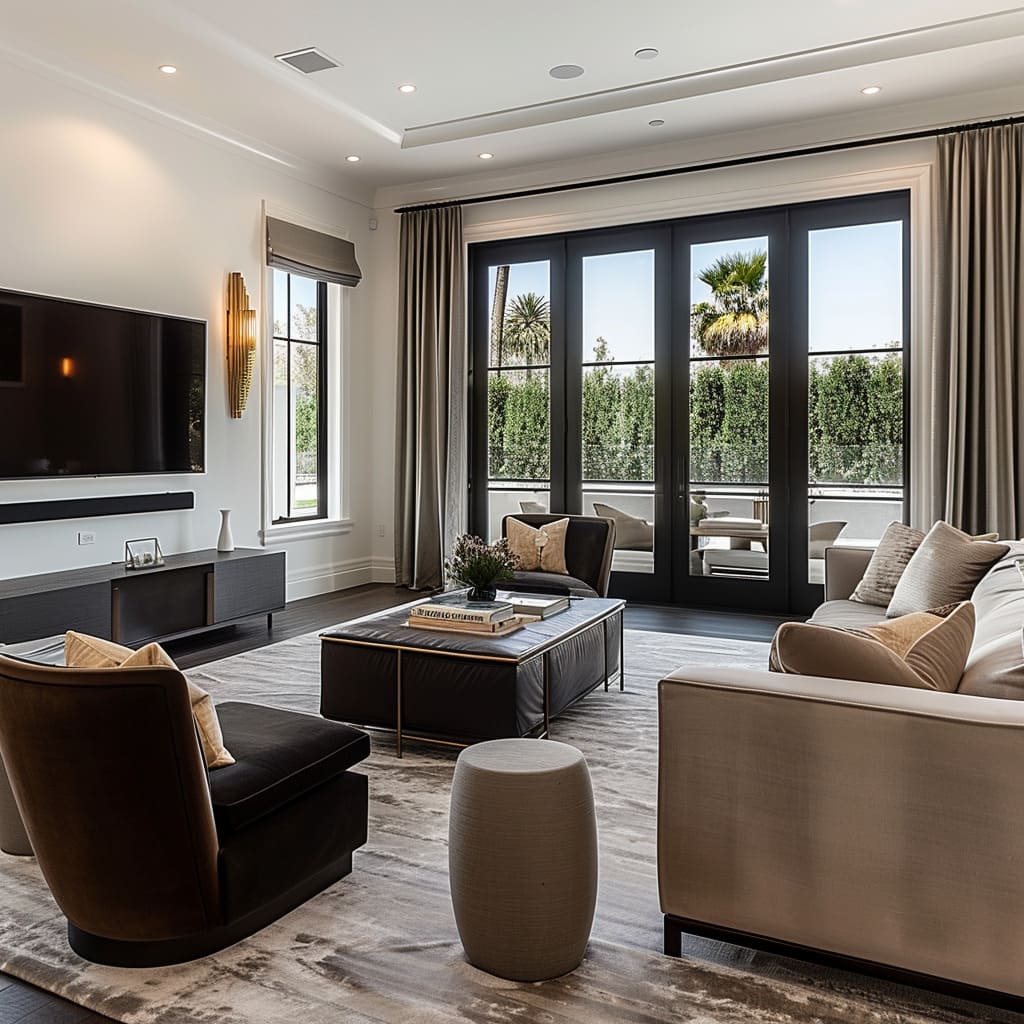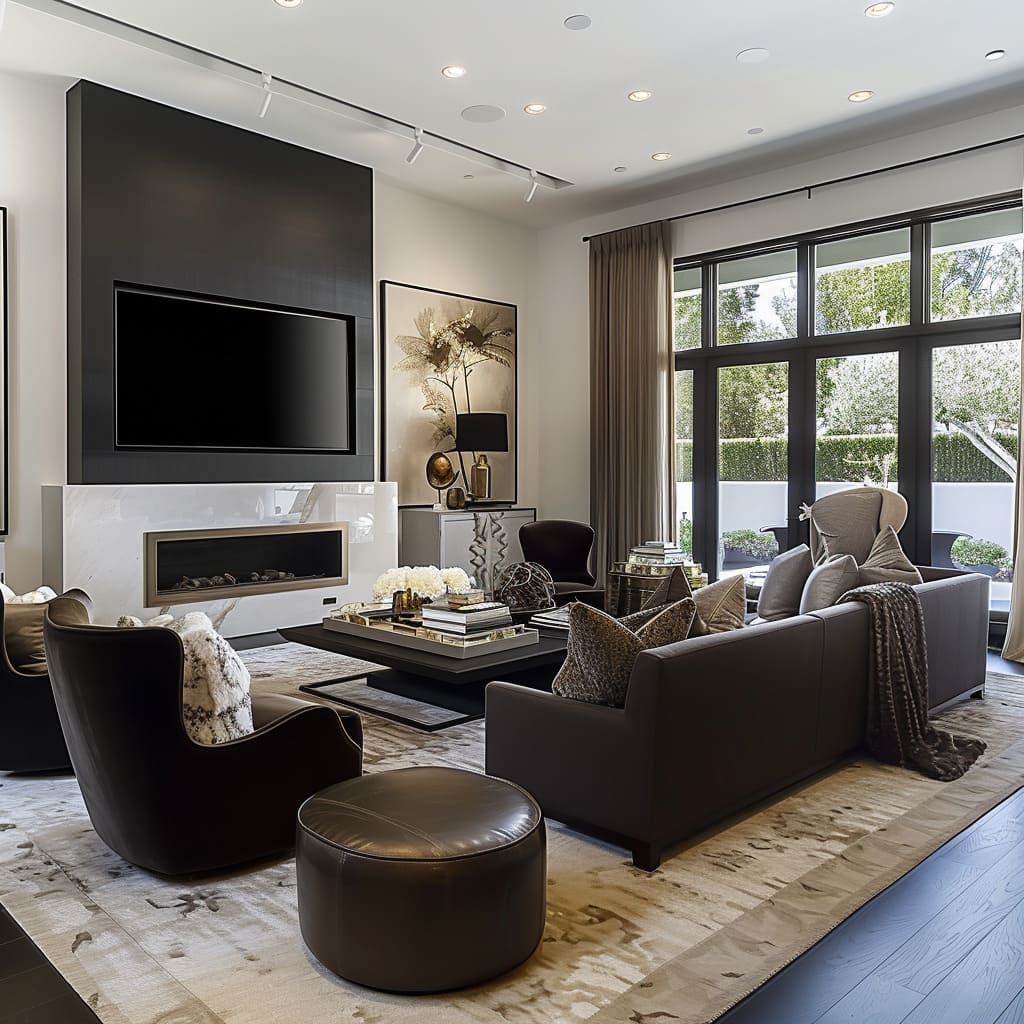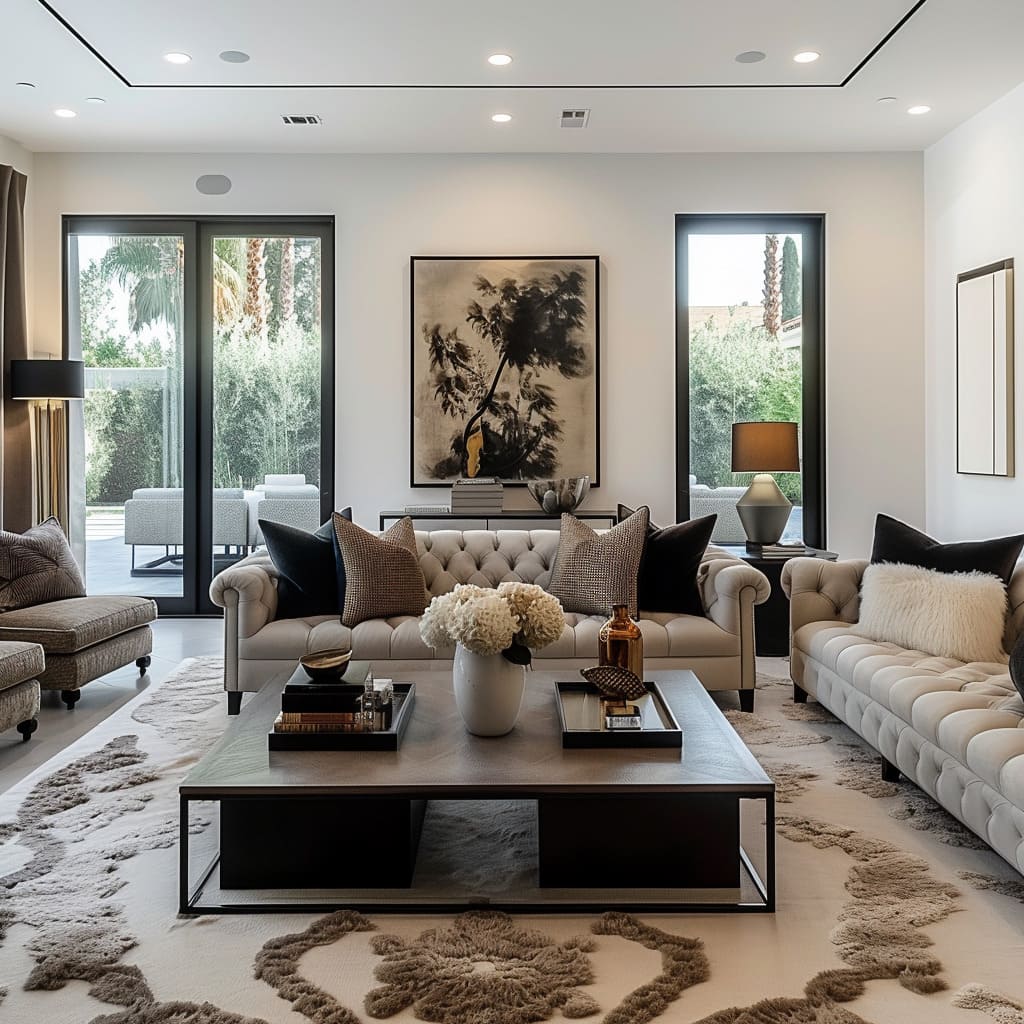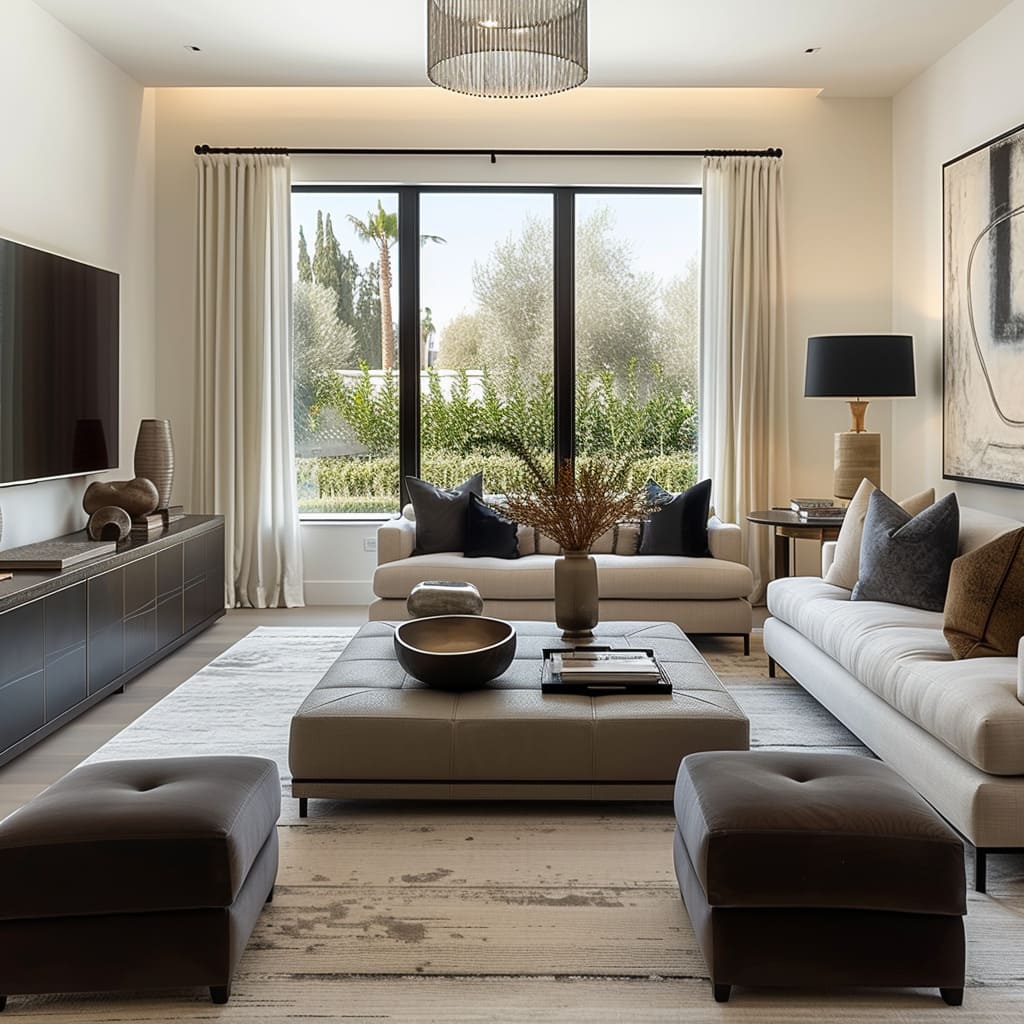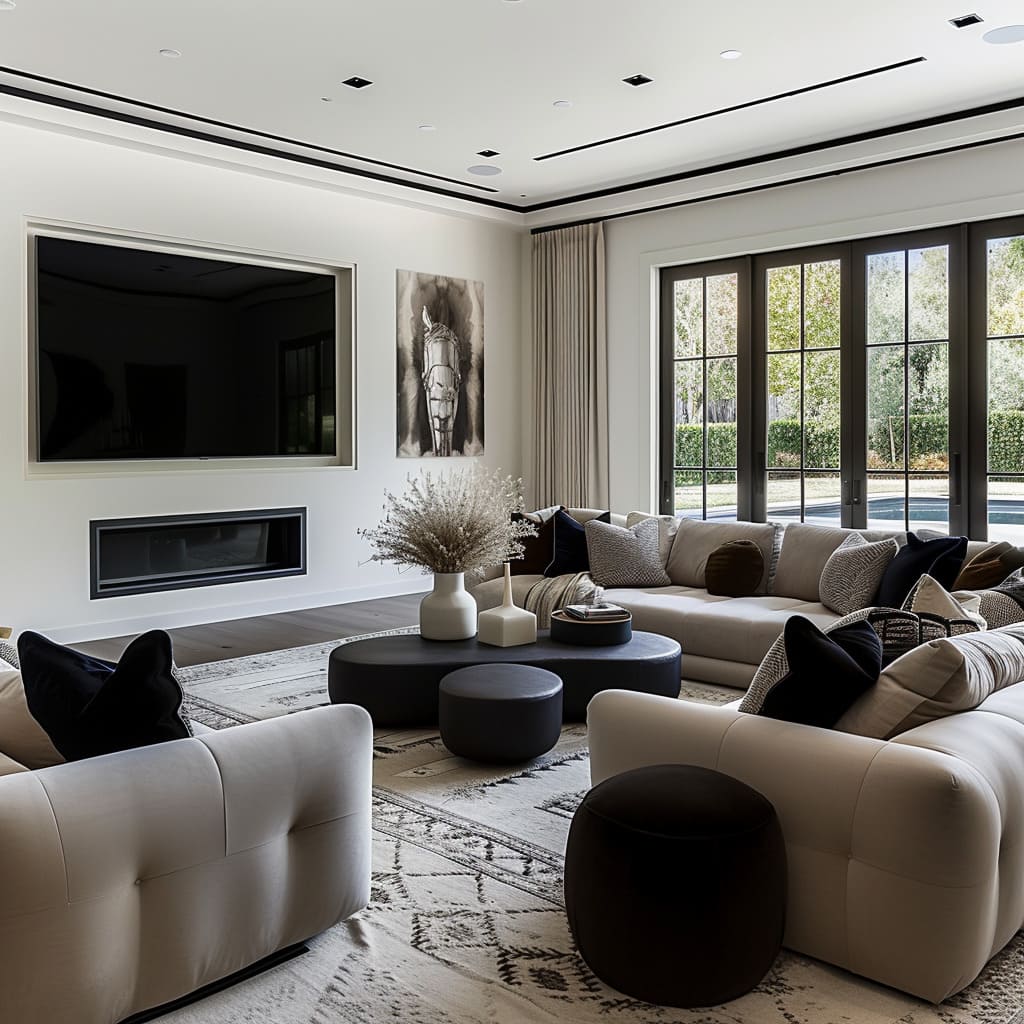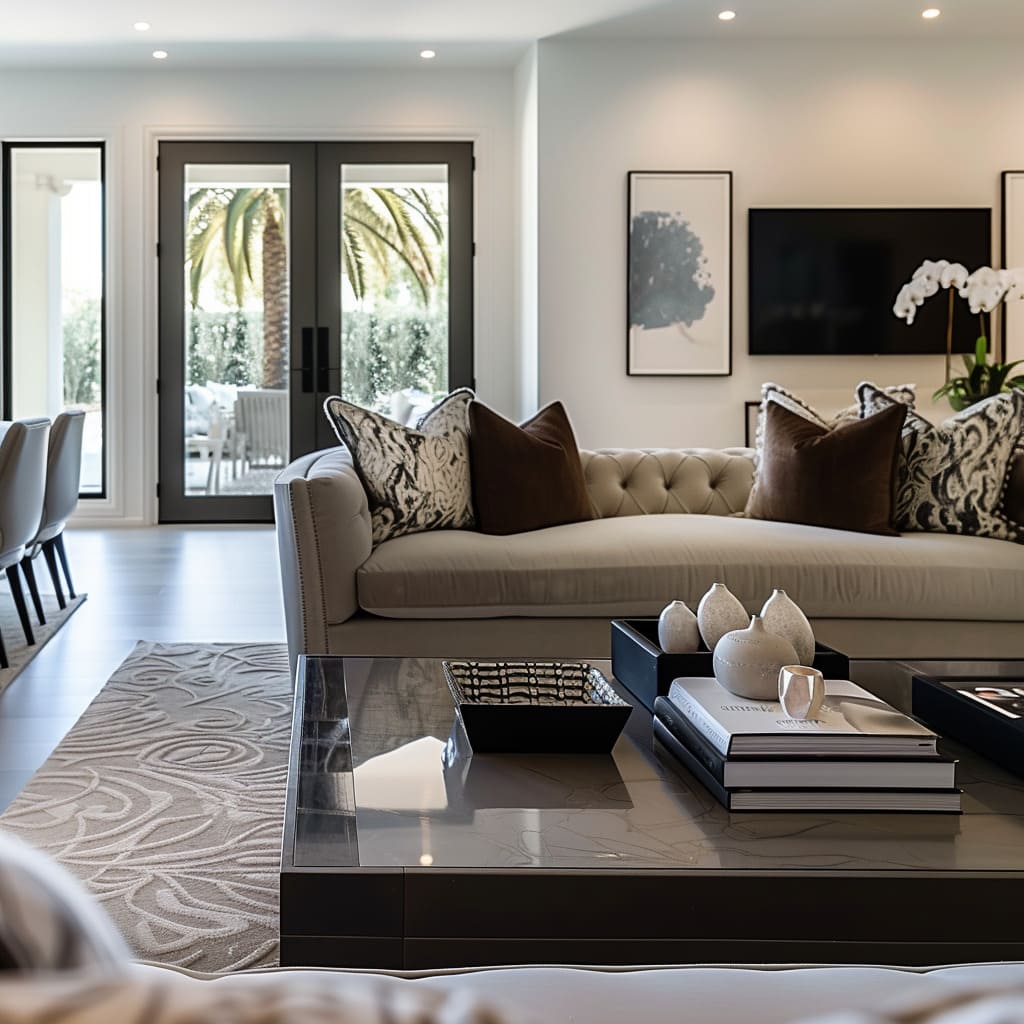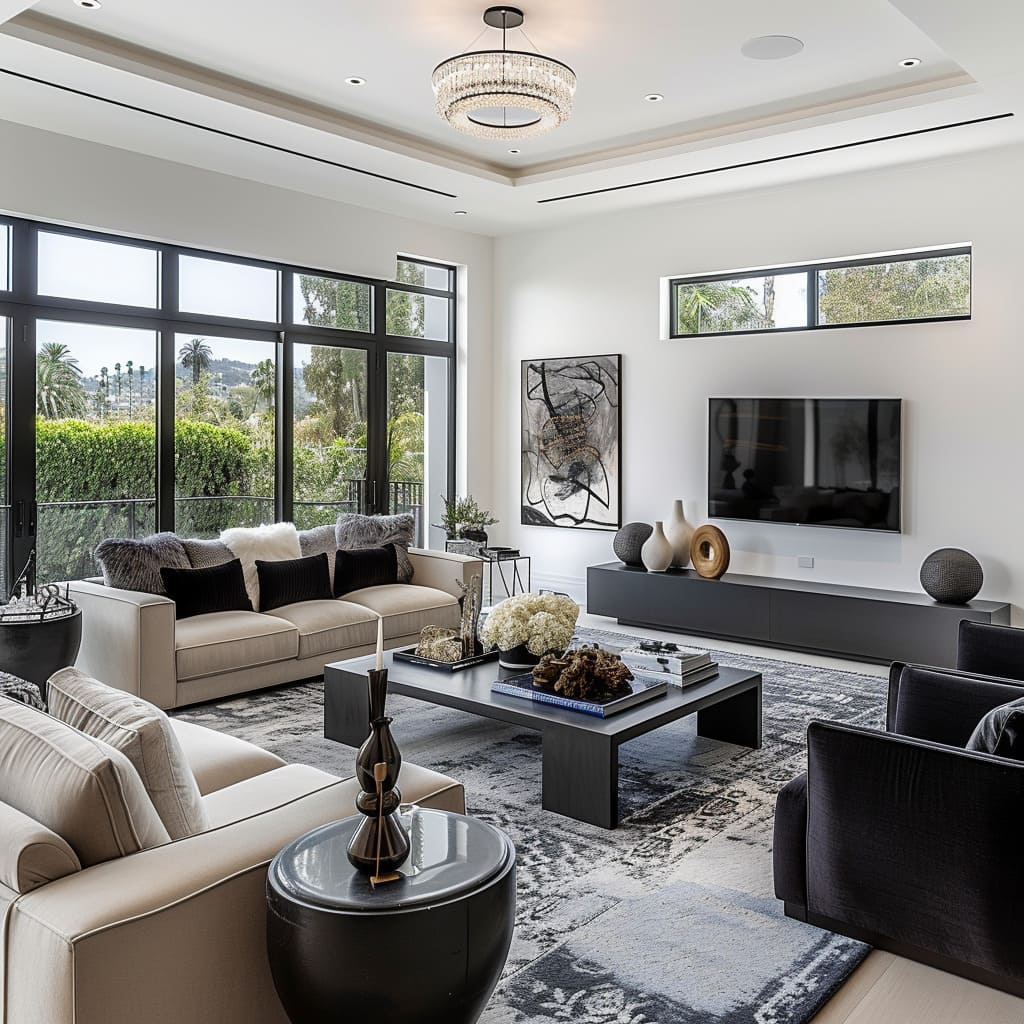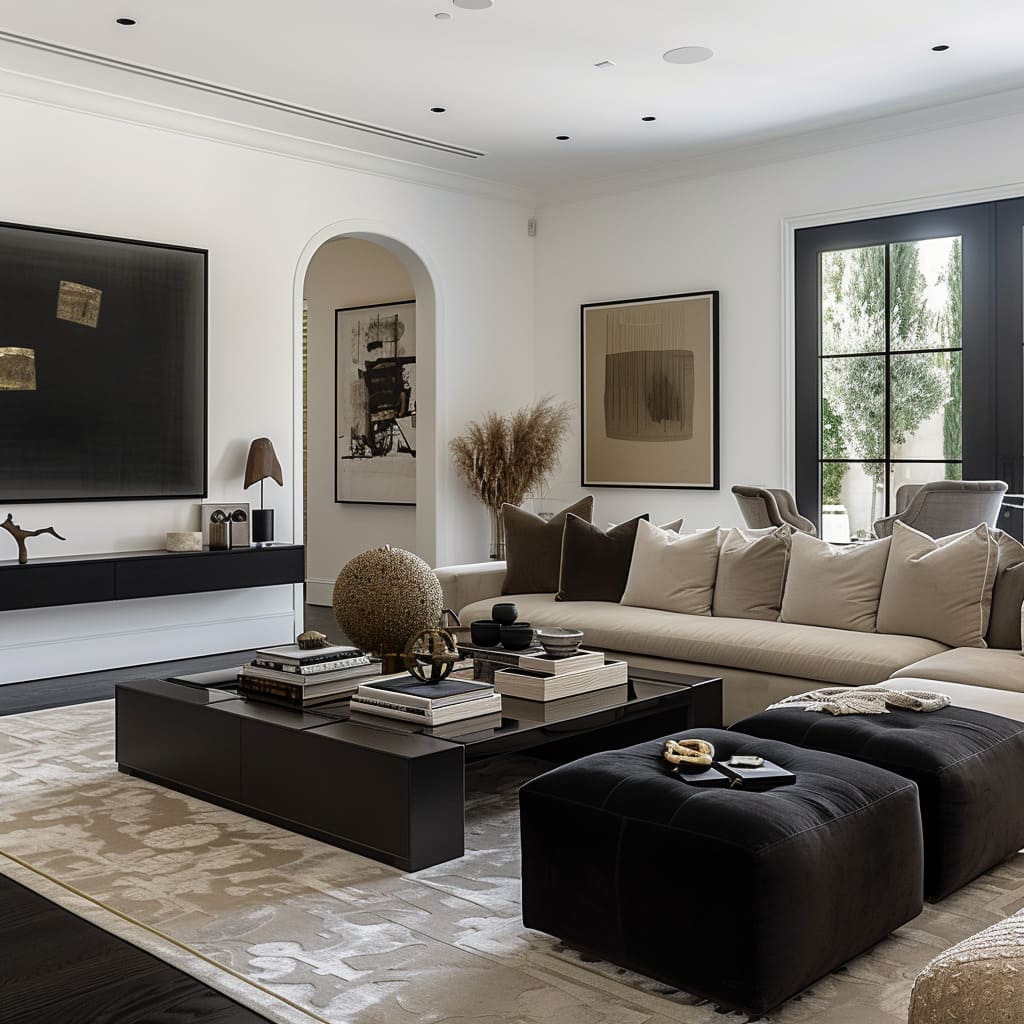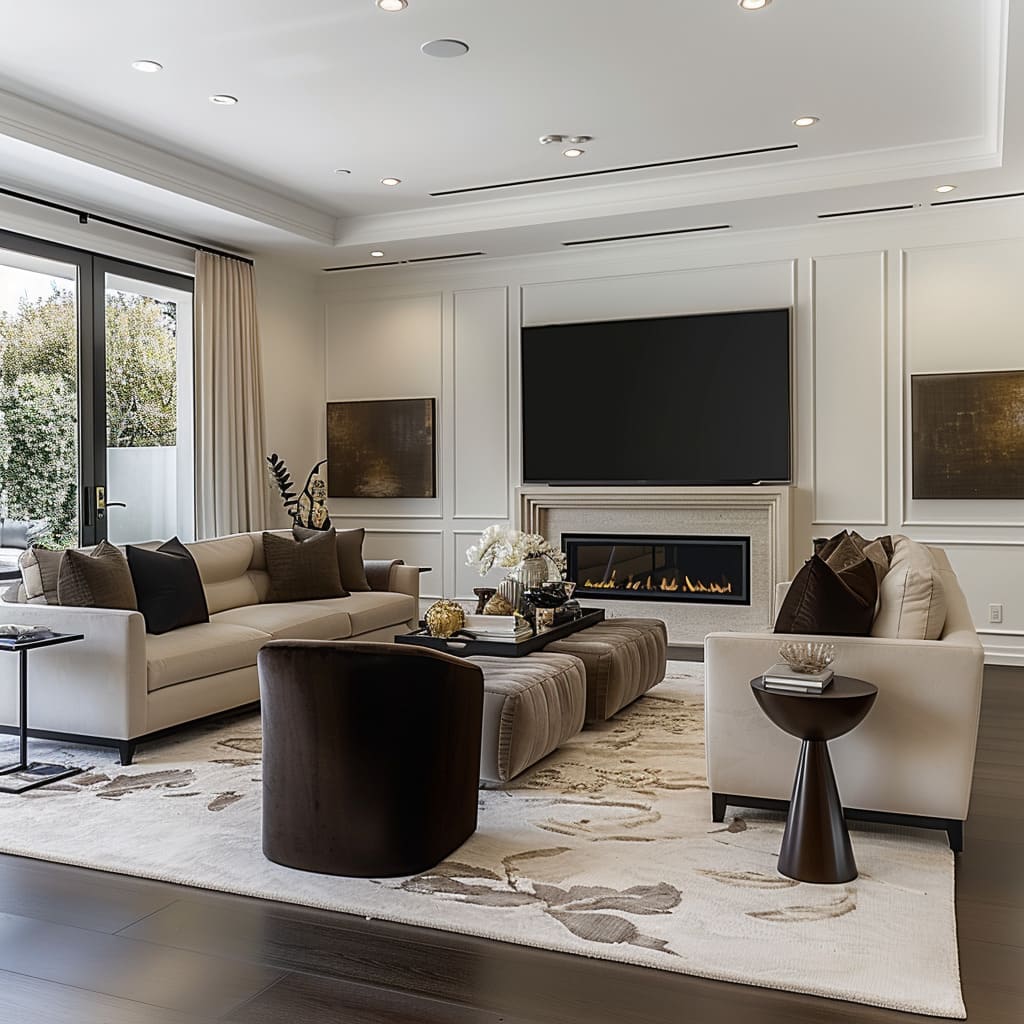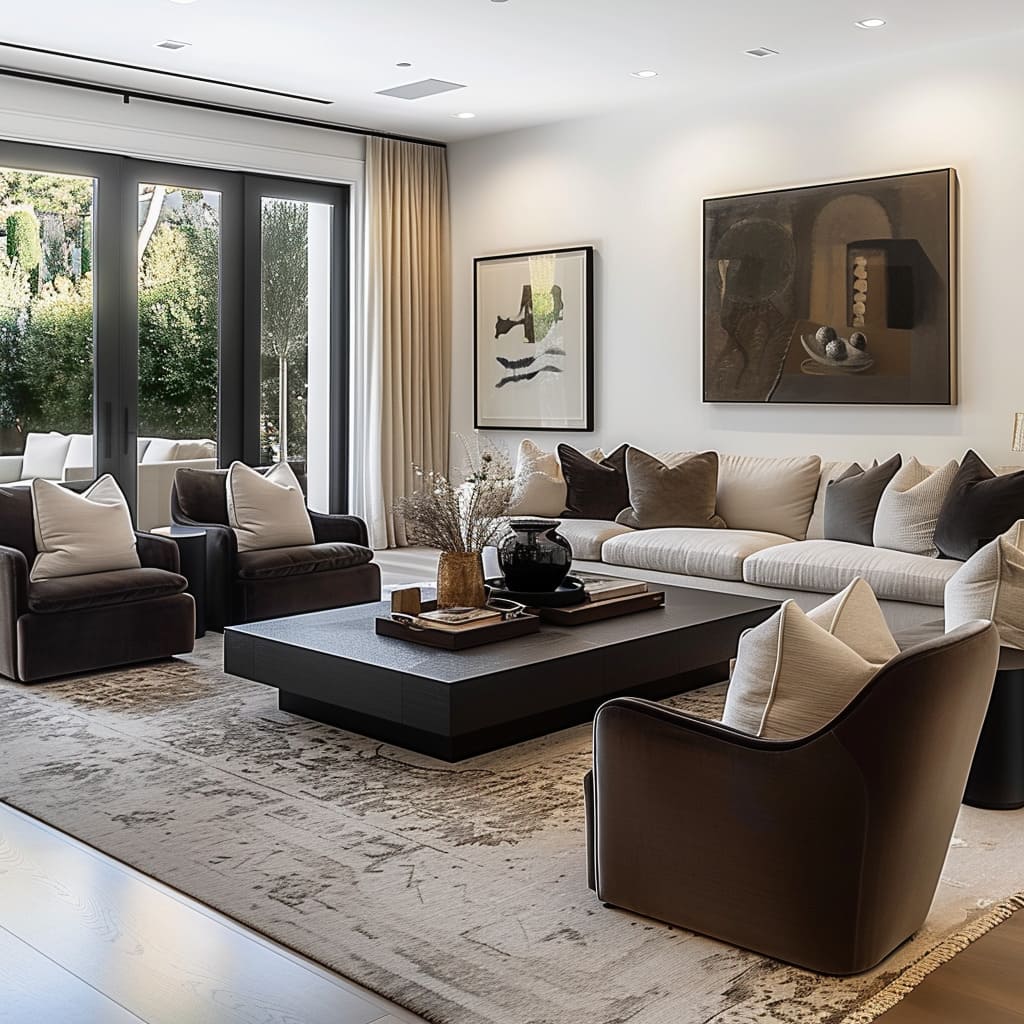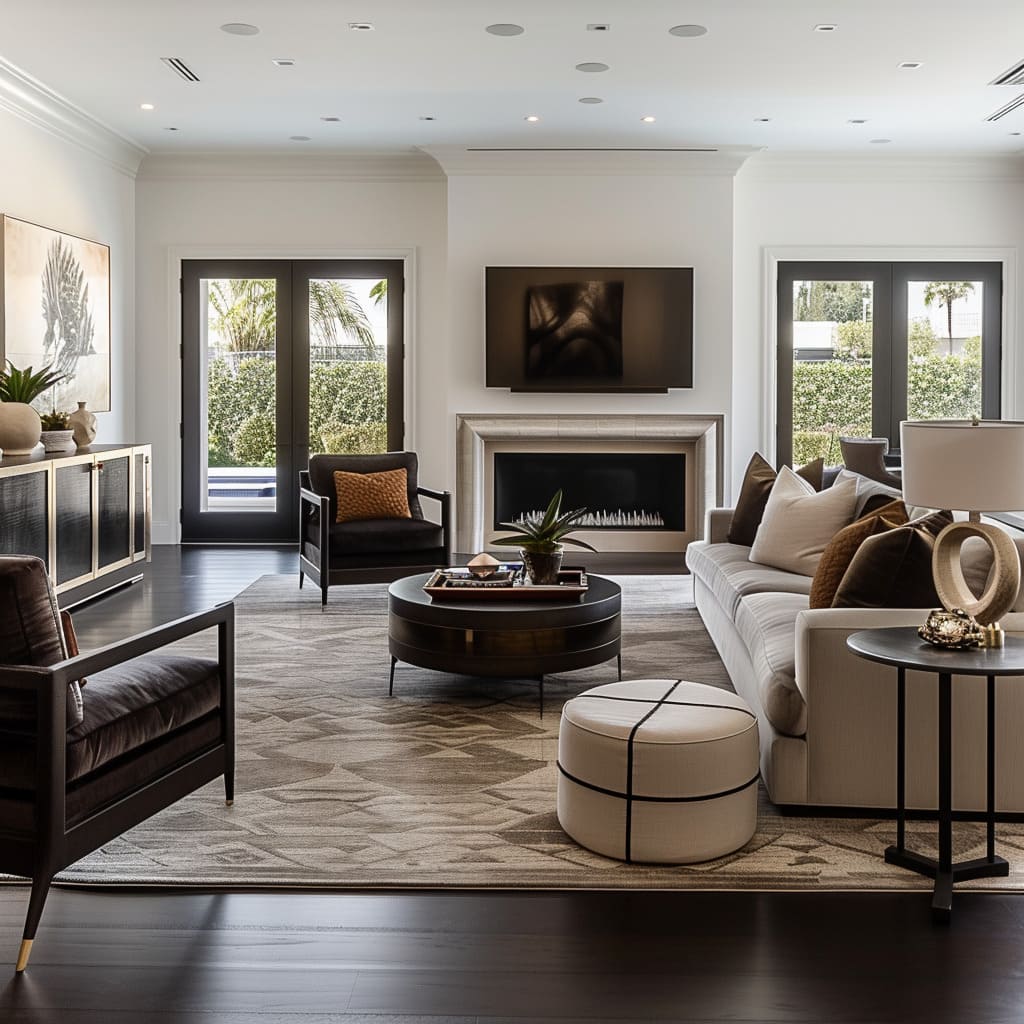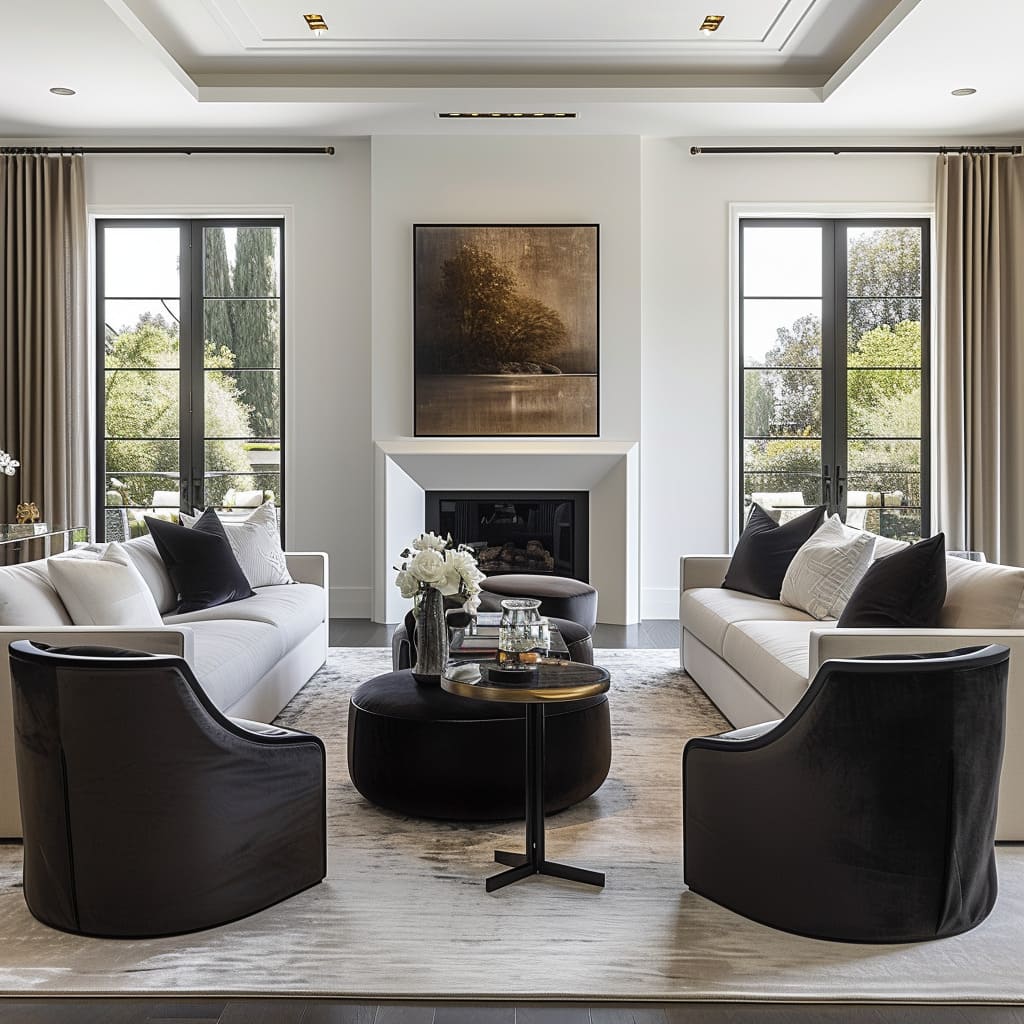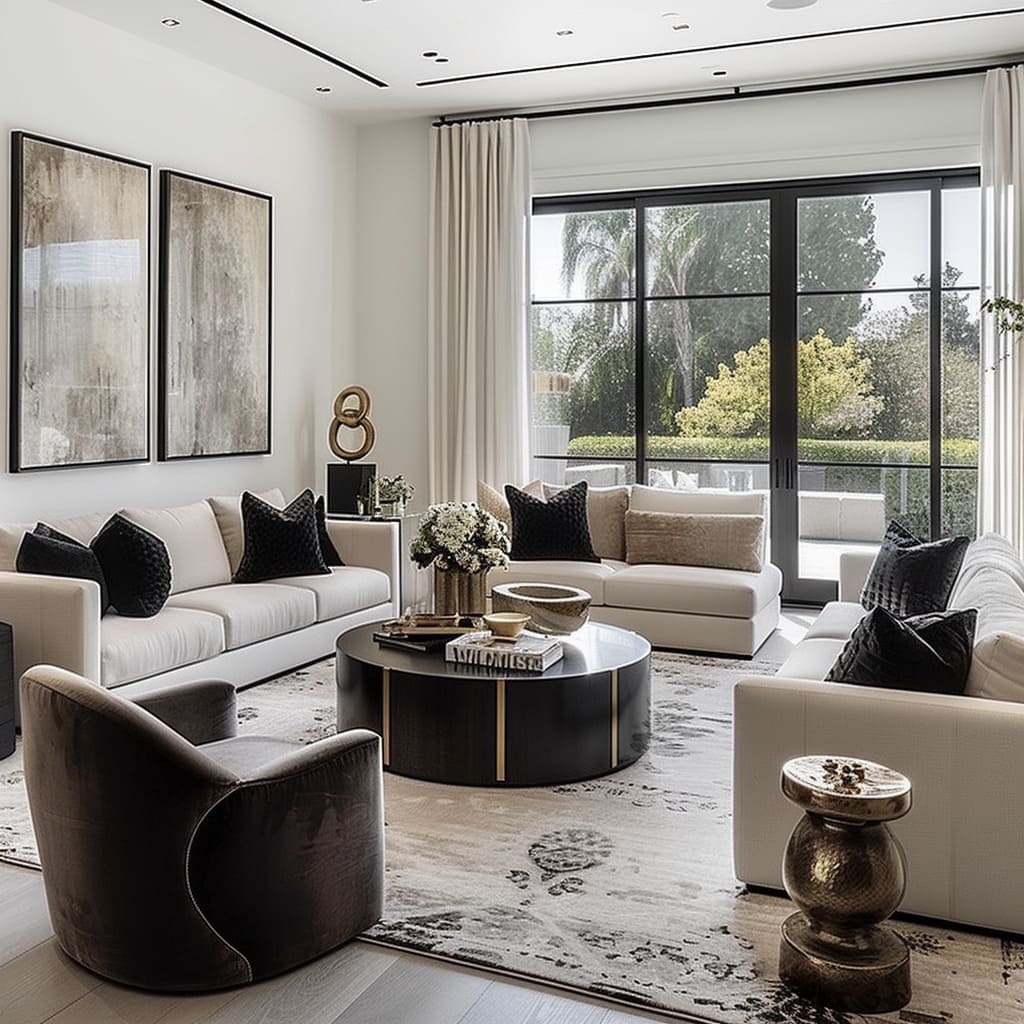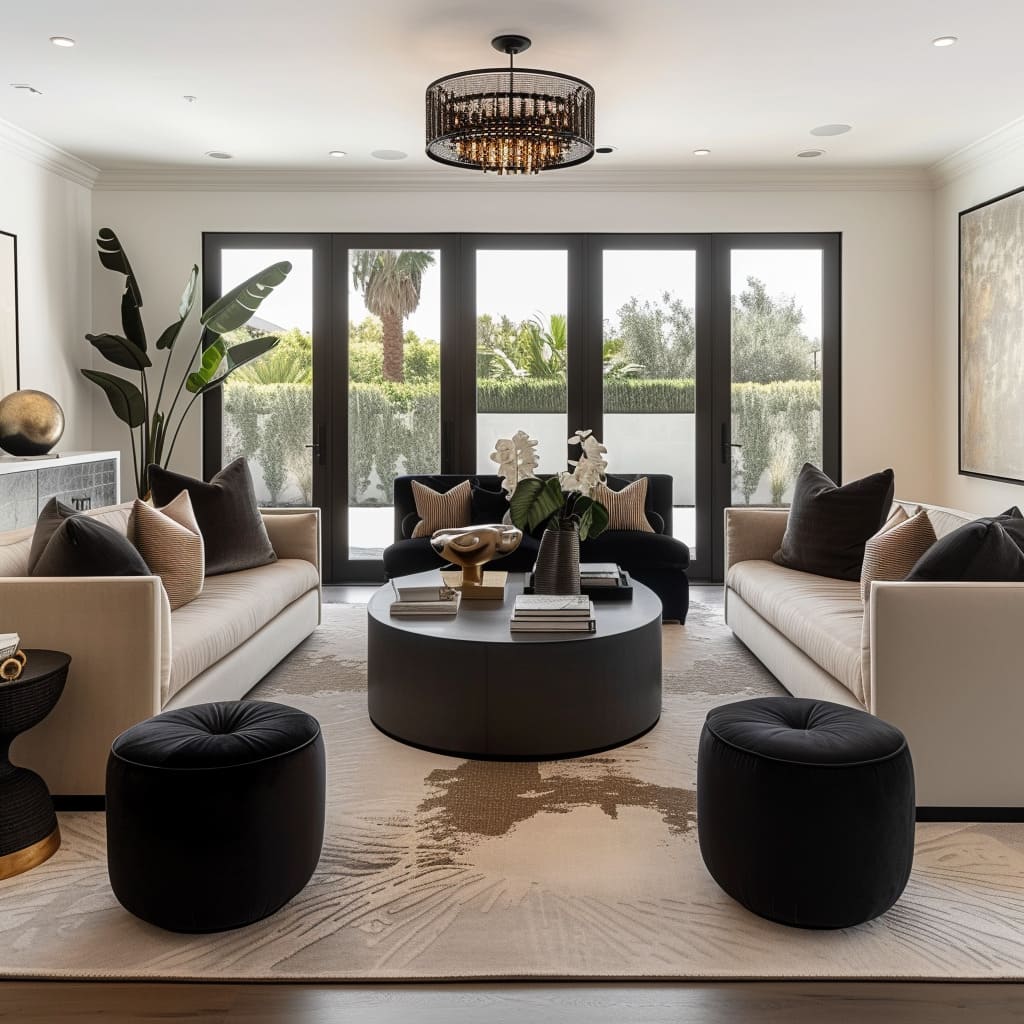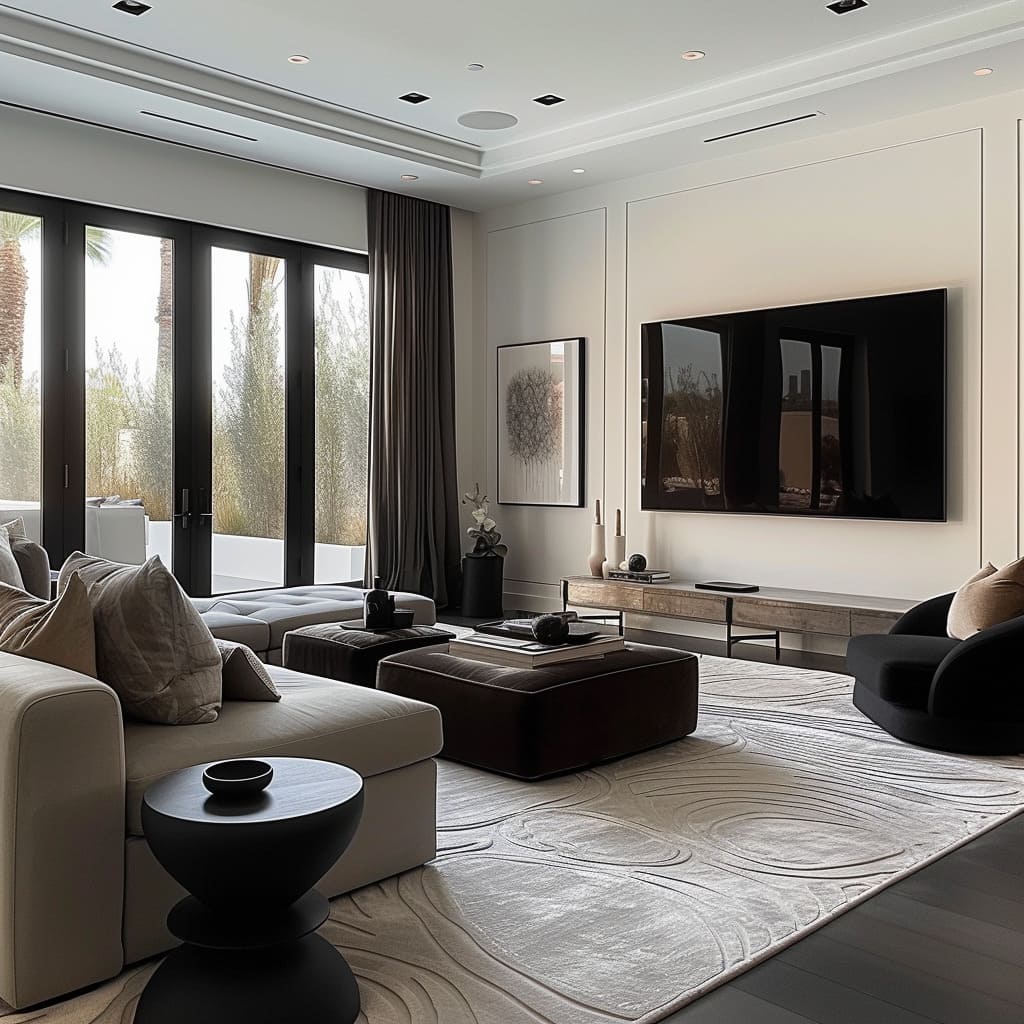Welcome to the refined equilibrium, where the art of interior design transcends the traditional boundaries of masculine and feminine aesthetics. In the contemporary living room, a delicate dance is choreographed between strength and softness, between authority and grace.
This article delves into the nuanced interplay of contrasts, materials, colors, and forms that culminate in spaces as complex and harmonious as the individuals they envelop. Join us as we explore how the confluence of opposites creates living rooms that are not just spaces to inhabit but experiences to feel, underscoring the essence of sophisticated and balanced living.
Balance through Contrast
In the sophisticated interplay of these living room interiors, the stark contrast between the dark, substantial furniture and the light, airy textiles is a deliberate choice, creating a visual and sensory balance that is both striking and harmonious.
The deep, rich tones of the furniture pieces stand as bold statements. This is offset by the inclusion of lighter elements such as plush throws, soft pillows, and delicately textured accents, which introduce a softness and approachability to the rooms.
This duality is not accidental; it is a thoughtful design strategy that adds layers of complexity and intrigue to the living space.
The balance achieved here is not one of competition, but of complement. Dark woods and leathers do not overpower; instead, they set the stage for lighter elements to shine.
The interplay of textures and colors invites the eye to move across the room, finding rest in the softness of a cream-colored throw or the inviting plush of a well-stuffed cushion.
To create this kind of balance in your own space, start with a foundation of heavier, more robust furniture. Look for pieces with weight and substance, like a dark wood coffee table or a slate-gray sectional.
Color Palette
The chosen hues work in unison to create a neutral backdrop that serves both masculine and feminine design elements equally. The neutrality of the palette lays a versatile foundation, where deeper tones like navy or slate can provide a bold statement often associated with masculine design, while lighter shades like ecru and ivory introduce a softness often found in feminine aesthetics.
Form and Function
The fusion of form and function in the furniture is apparent, where each piece is designed with both a strong presence and a sense of comfort. The masculine formality of clean, angular lines is often found in the structural aspects of tables and shelving, while the feminine aspect is embraced through the inclusion of rounded edges, tufting, or decorative detailing in the soft furnishings.
To incorporate this duality into your interior, select pieces that strike a balance between sharp, architectural lines and soft, inviting forms that beckon interaction and comfort.
To craft a living space that truly resonates with the blend of masculine and feminine, it’s essential to curate a selection of furniture and decor that speaks to both ends of the design spectrum.
Let the structural elements of your space dictate the foundation of your design, and use accents and textiles to infuse a sense of warmth and softness.
Art and Accessory Selection
The art pieces selected for these interiors act as anchors of the masculine and feminine duality. Bold, large-scale paintings with strong strokes and dark hues command attention, setting a masculine tone.
These are balanced with delicate sculptures and pottery that introduce a softer, more feminine counterpoint.
The careful placement of these items—be it on the mantle or as a centerpiece on a coffee table—ensures a visual dialogue between strength and elegance. To embody this principle in your own space, pair robust art pieces with more intricate accessories.
Consider using substantial frames around delicate artworks or placing robust sculptures alongside fine, detailed trinkets to create an engaging and harmonious display.
Lighting and Ambiance
The chosen lighting fixtures in these spaces are deliberate in their contribution to the masculine-feminine balance. Industrial-inspired chandeliers with hard lines and metal finishes impose a strong presence, reflective of a masculine sensibility.
These are softened by the inclusion of lamps with fabric shades that diffuse light gently, lending a warm and nurturing glow associated with feminine interiors.
Even the strategic placement of lights—highlighting certain textures and colors—can contribute to the overall balance of the space. For your own interiors, select bold lighting fixtures that make a statement and pair them with soft accent lights.
Use dimmers to adjust the intensity of light to suit different moods and times of day, and consider the direction of light to enhance the textural interplay of your decor.
To fully integrate the blend of masculine and feminine in your interior design, it is essential to create layers of contrast and harmony through the use of art, accessories, and lighting.
Use strong, impactful art to set a commanding tone, softened by the placement of delicate and detailed accessories that offer a nuanced contrast. In lighting, combine the architectural impact of modern fixtures with the subtle allure of soft, ambient lighting to forge a space that is both dynamic and inviting, embodying the balance of yin and yang in your living environment.
Architectural Details
Architectural components in these living spaces serve as the canvas for a dance between robustness and elegance. The commanding high ceilings and expansive windows create an imposing and sturdy framework, emblematic of a masculine approach.
Yet, these bold features are harmoniously interwoven with the feminine softness of window dressings. The sheer curtains or luxurious drapes not only modulate light and privacy but also add fluidity and grace to the room’s overall ambiance.
When aiming to replicate this in your home, focus on how the structural elements can be softened by your choice of treatments. For instance, heavy drapery can be used to complement large, stark windows, and elegant cornices can add a refined touch to lofty ceilings, ensuring that the space feels balanced and cohesive.
Spatial Dynamics
The spatial arrangement within these interiors is a testament to the equilibrium of masculine and feminine energies. The open-plan areas exude a strong, unfettered character, with minimalist furniture arrangements and clean lines defining the masculine spirit of order and openness.
In contrast, pockets of the room are dedicated to snug, elaborate setups with plush seating and detailed decor, creating inviting sanctuaries within the larger space.
These nooks serve as personal retreats, enveloping inhabitants in comfort and warmth, indicative of a more feminine touch. To achieve this dynamic in your space, consider designating areas with different purposes and atmospheres.
Use larger furniture pieces to delineate the main, communal zones and smaller, softer furnishings to create secluded corners. Pay attention to the flow between these areas, ensuring a seamless transition from the expansive to the intimate.
In designing a room that embodies both masculine and feminine qualities, it is crucial to consider not only the visual aspects but also the functional dynamics of the space. Use architectural details to establish a strong foundation, softened by elegant and thoughtful treatments.
Plan the layout to offer both open spaces for interaction and smaller areas for personal refuge. With careful consideration of these elements, you can create an interior that is both powerful and tender, perfectly balanced to cater to a diverse array of needs and preferences.
In the symphony of interior design, the living room becomes a stage where every note of masculine and feminine design finds its place, creating a melody that resonates with depth and diversity. From the architectural prowess that frames these spaces to the careful curation of textures and hues, every detail is a testament to the harmony achievable within our homes.
As we draw the curtains on this exploration, we are reminded that the true beauty of interior design lies in its ability to reflect the full spectrum of our lives, encapsulating the bold and the beautiful, the robust and the refined, the yin and the yang. It is within this equilibrium that we find spaces that are not only aesthetically pleasing but also truly representative of the intricate tapestry of human experience.


